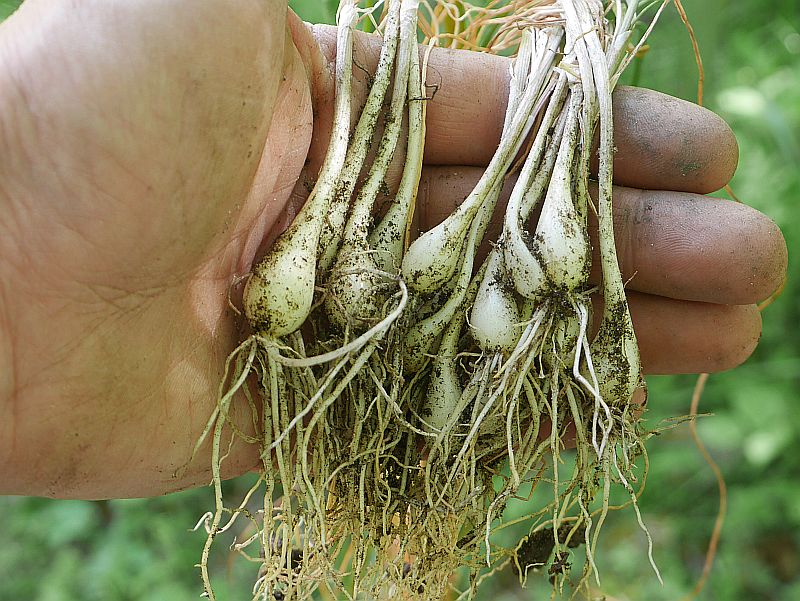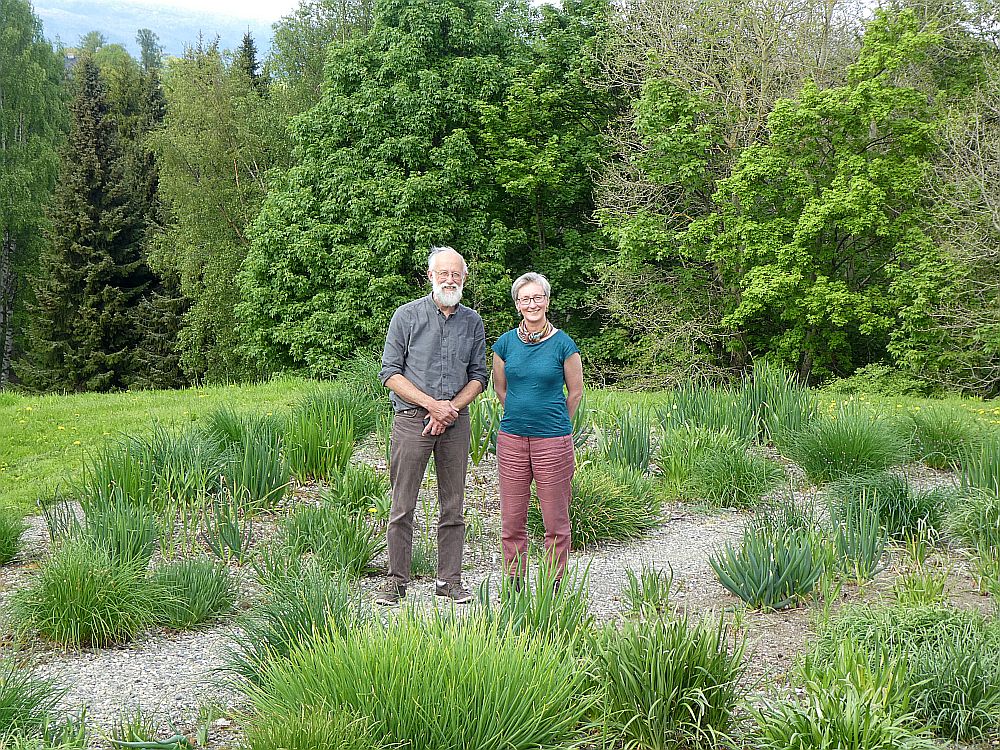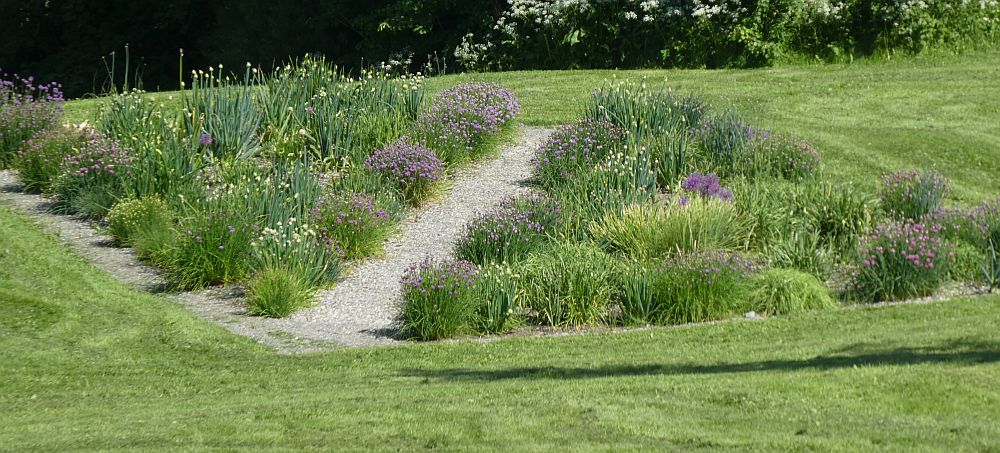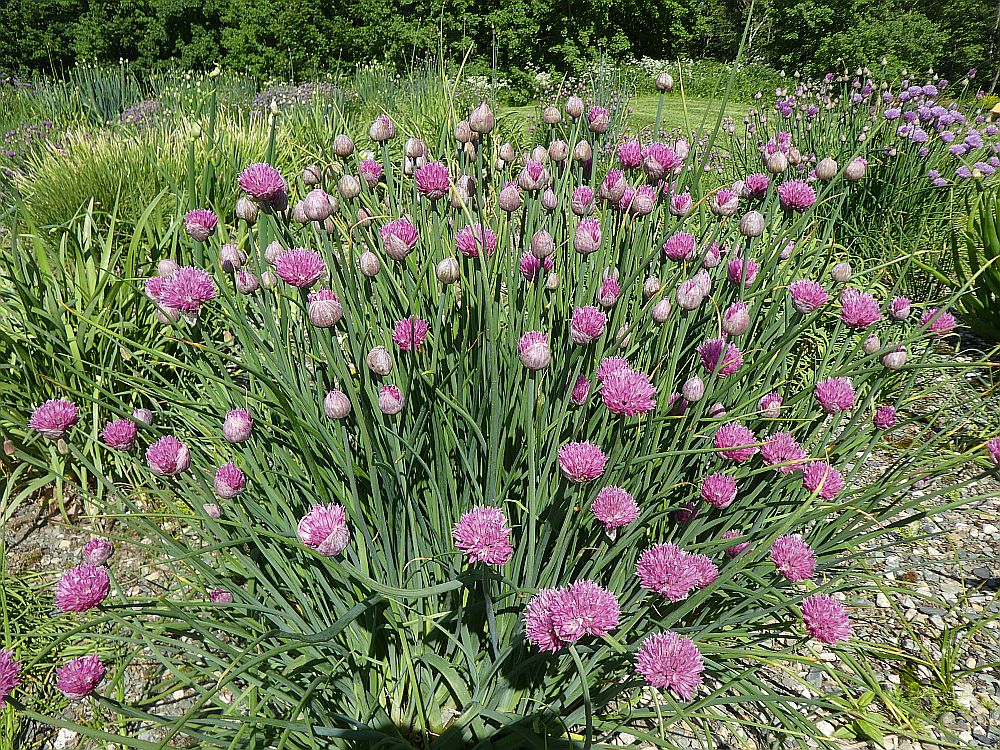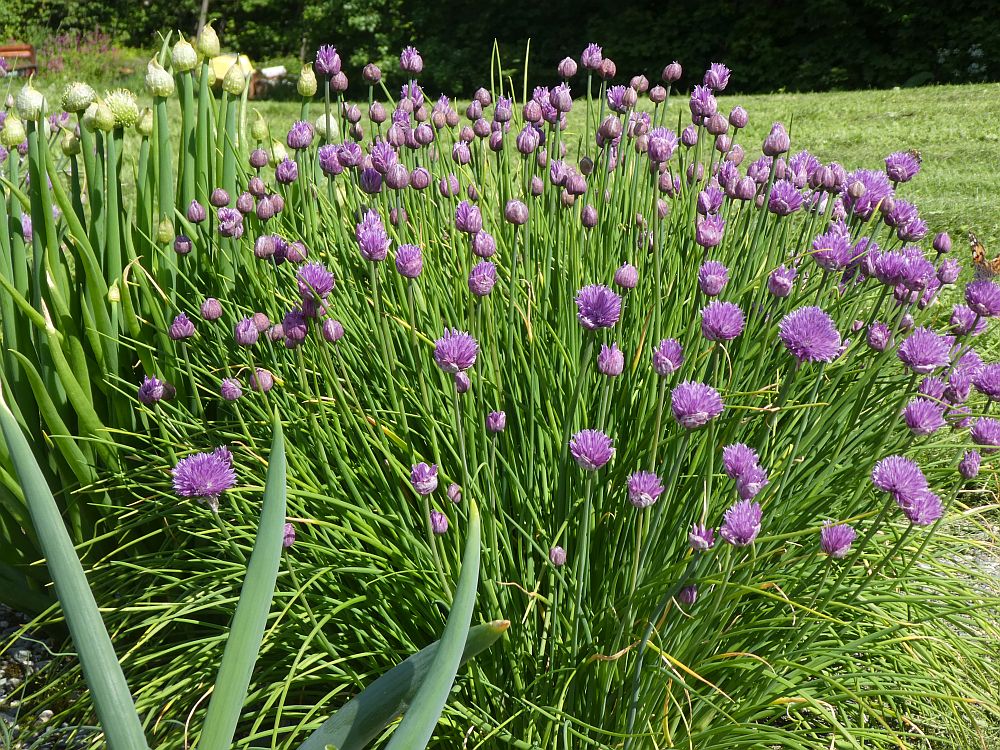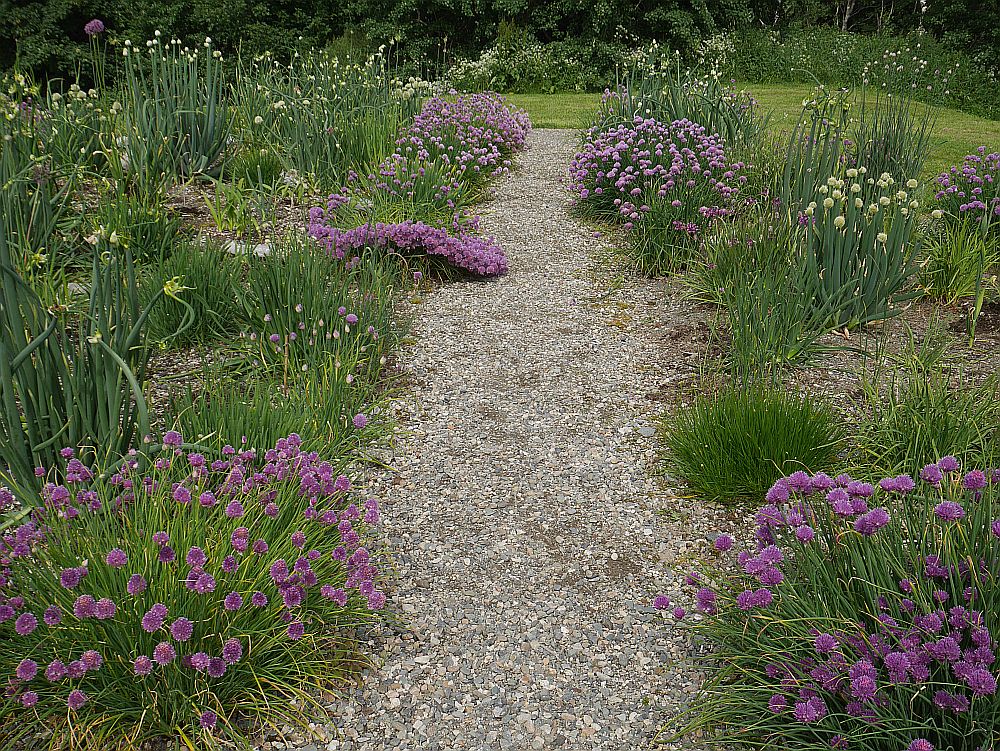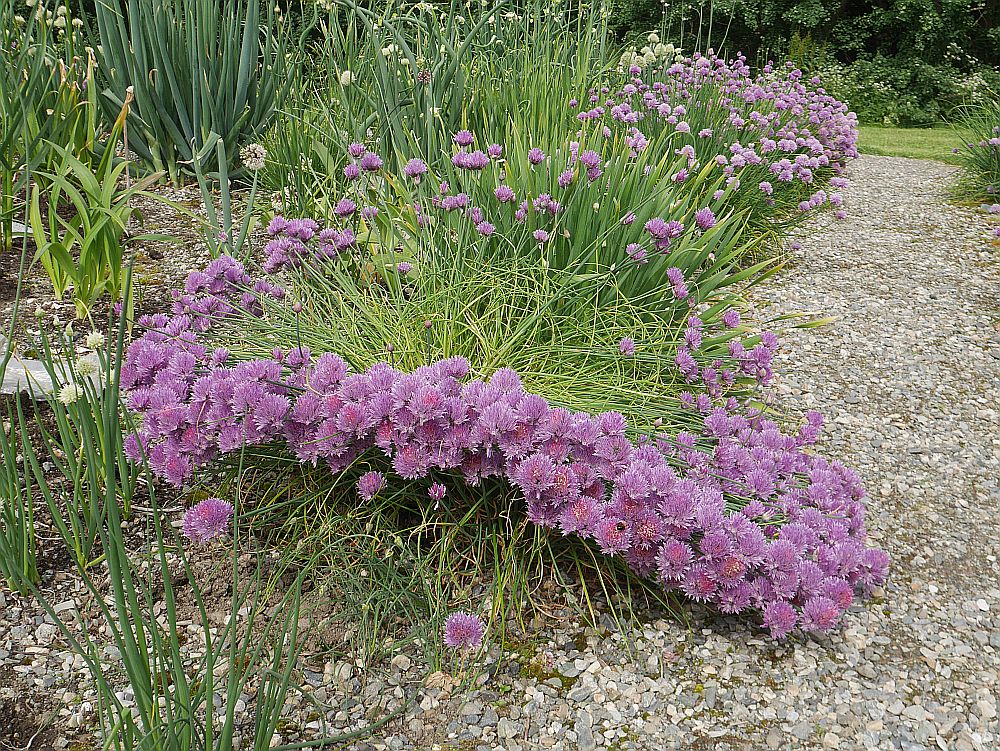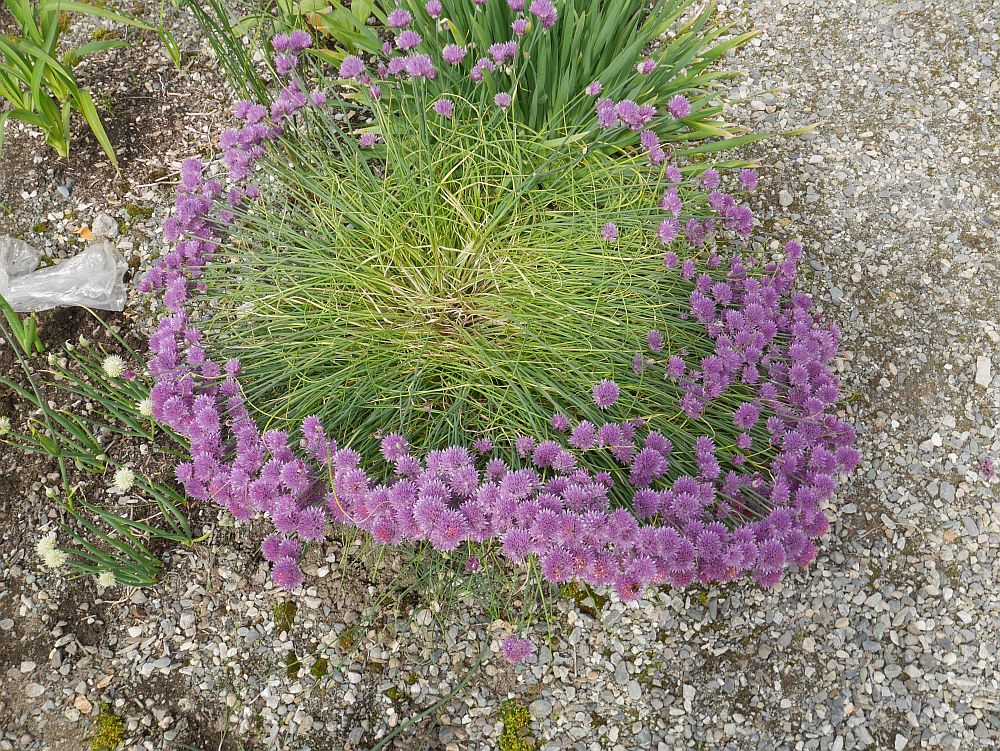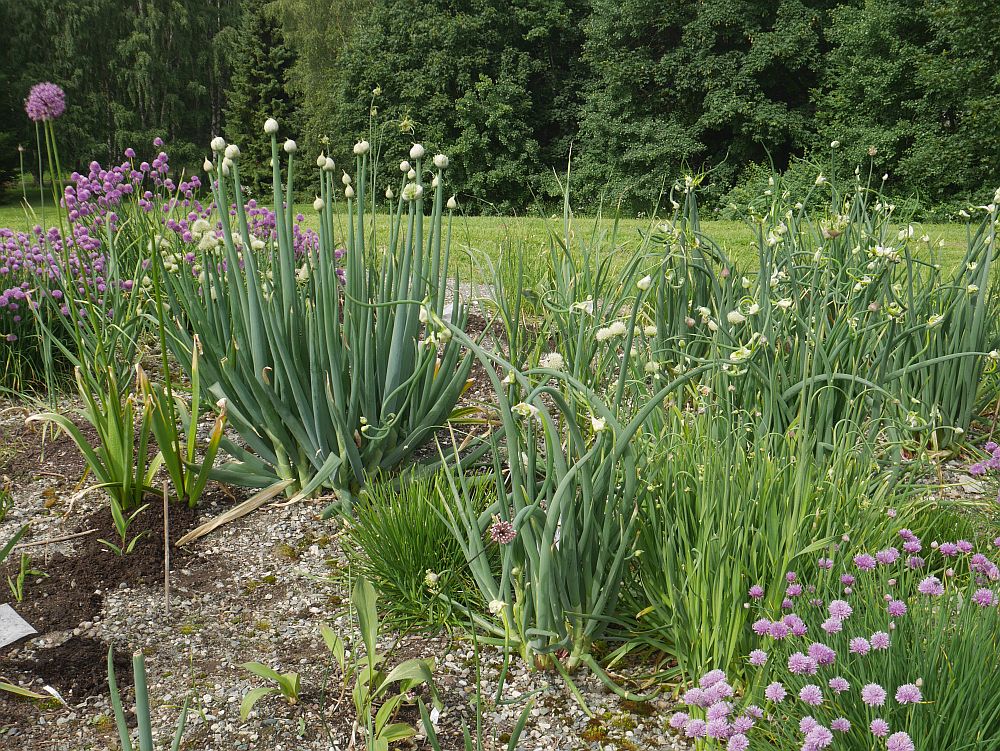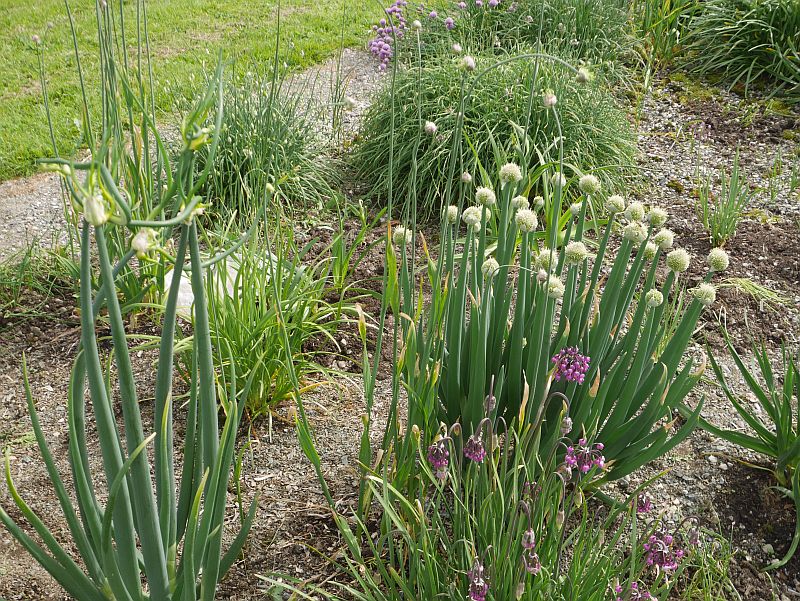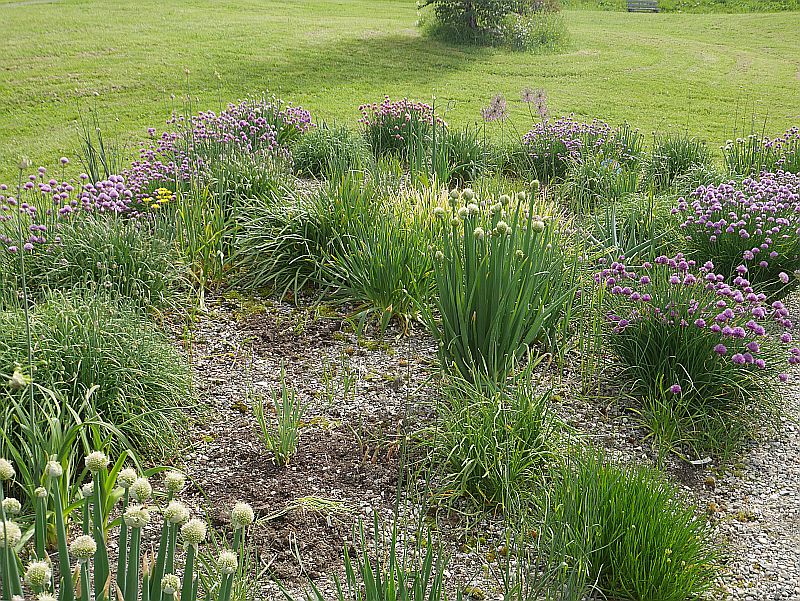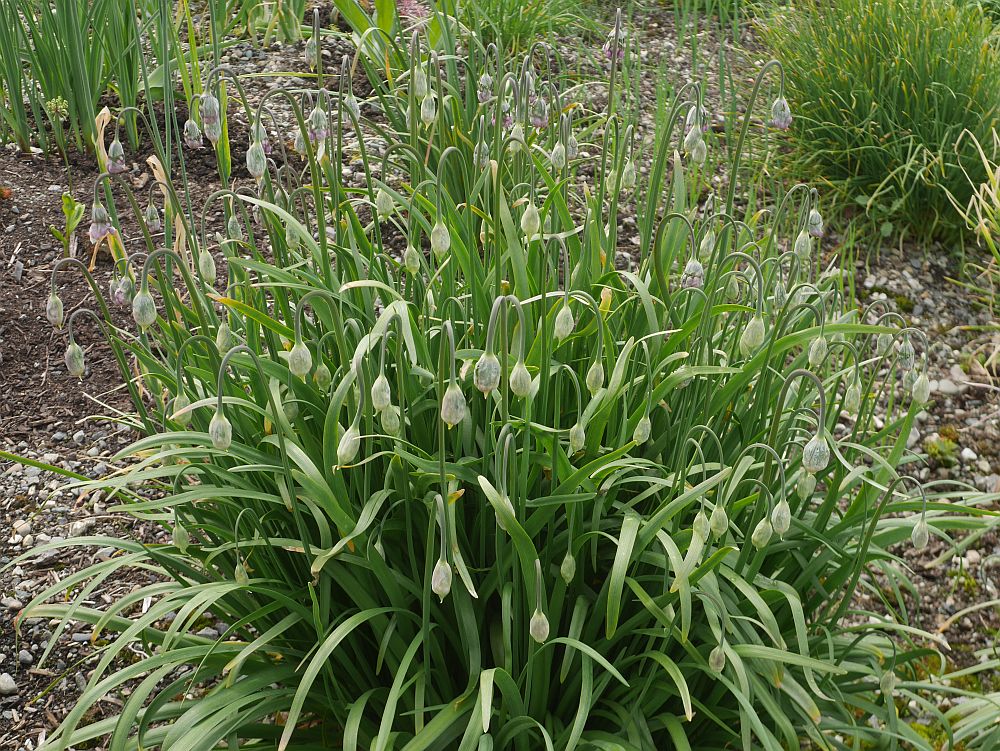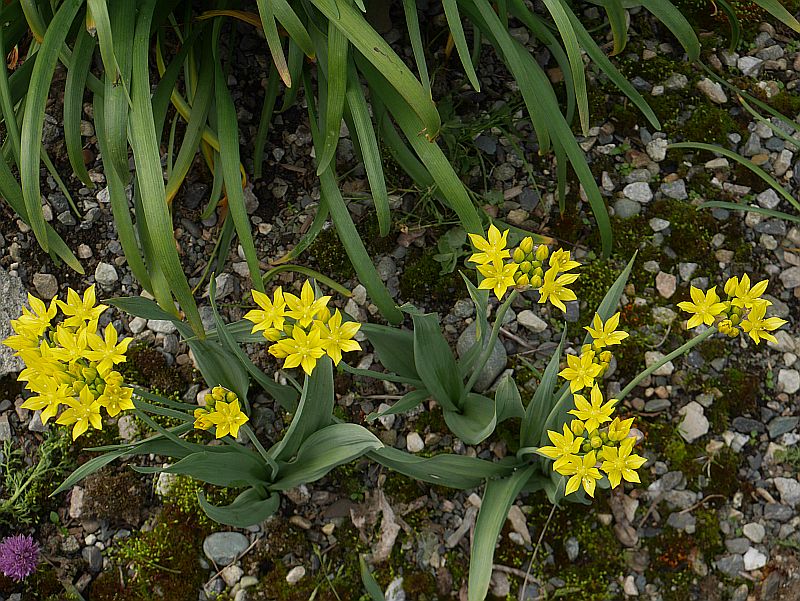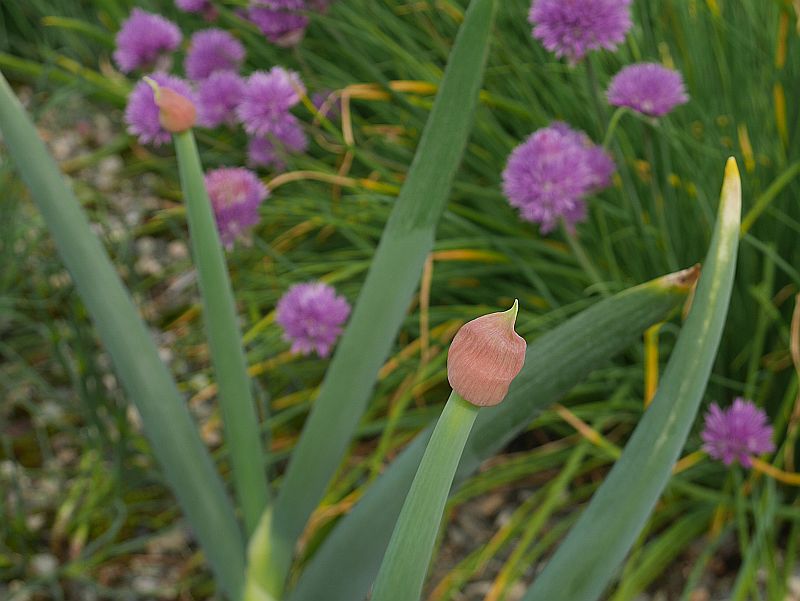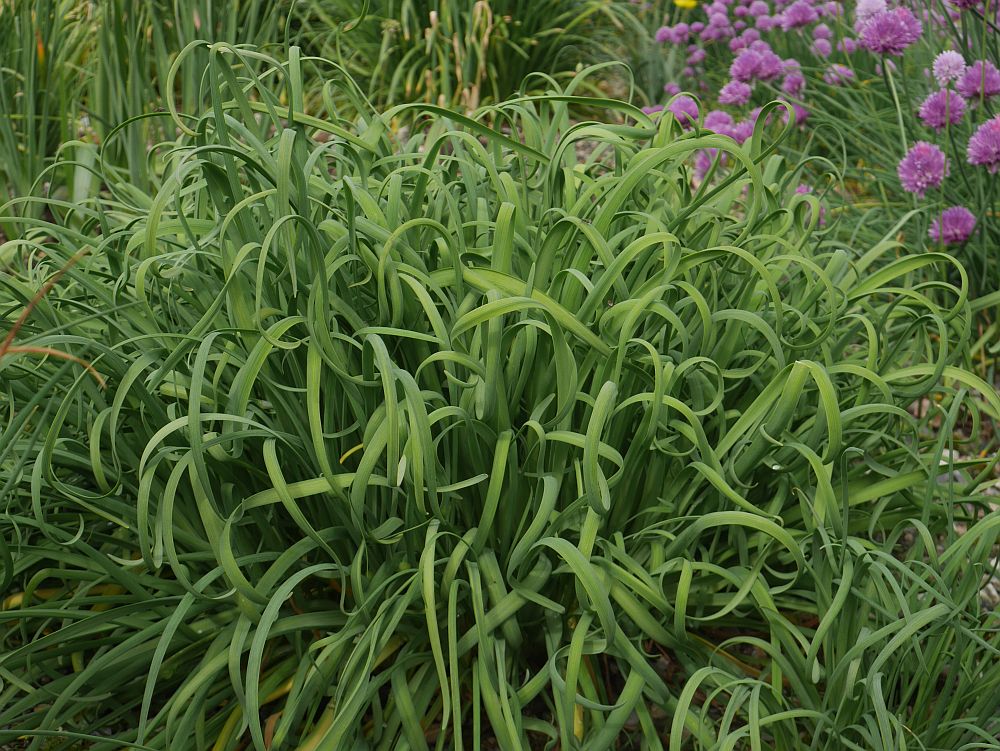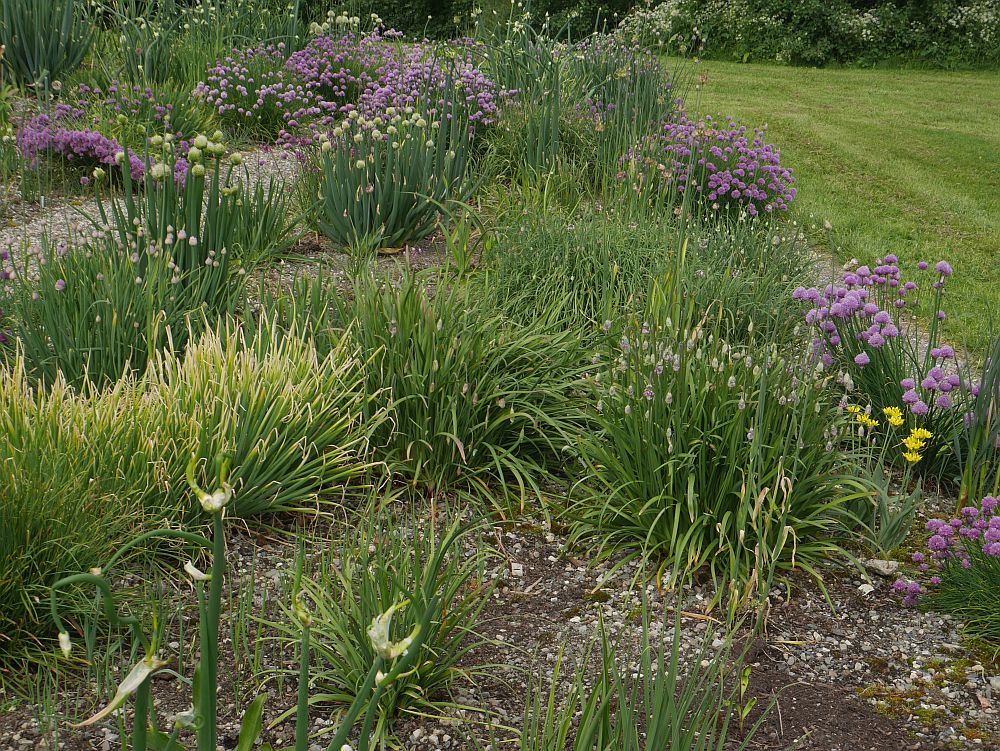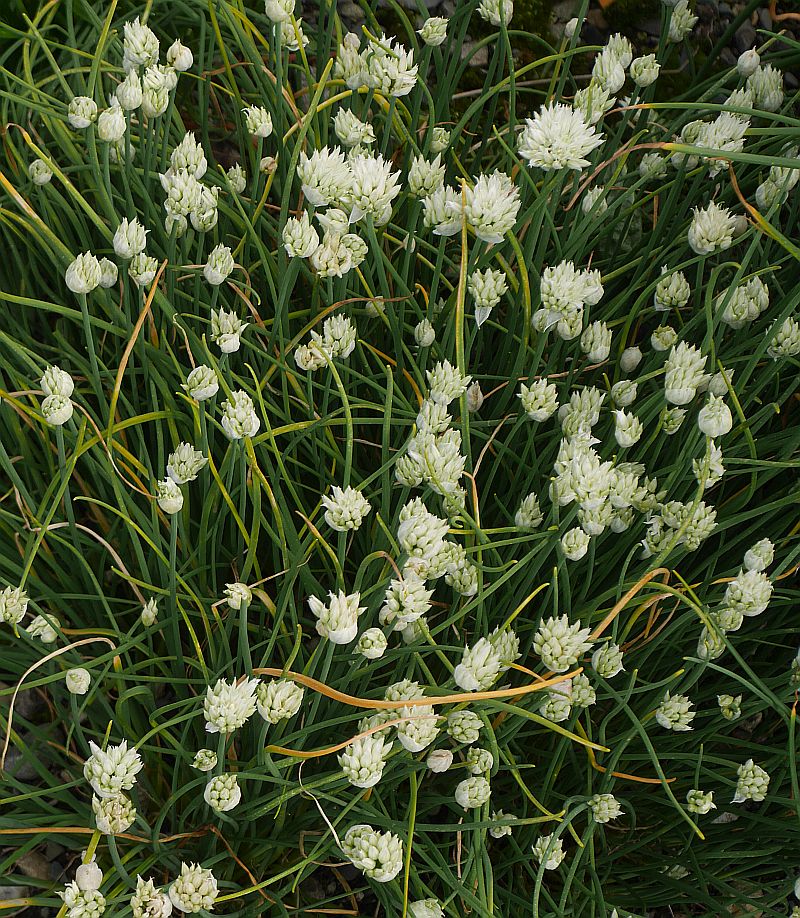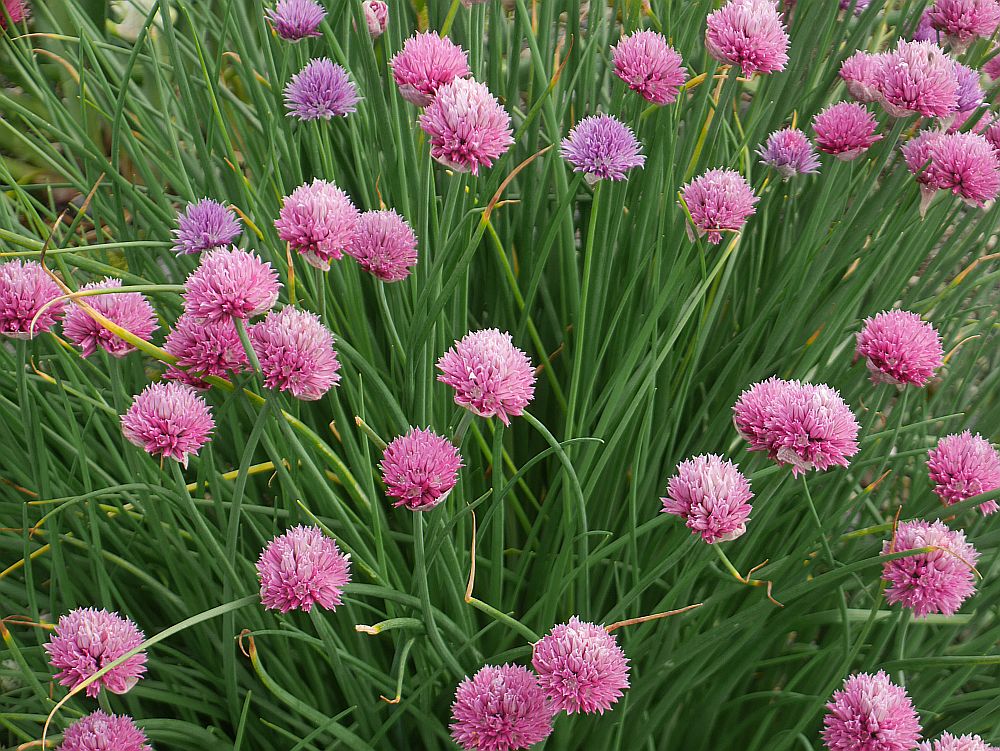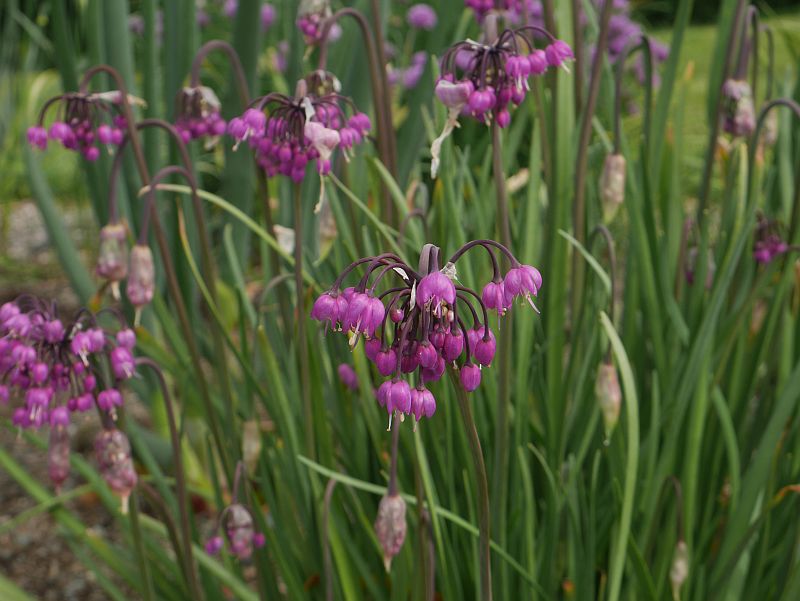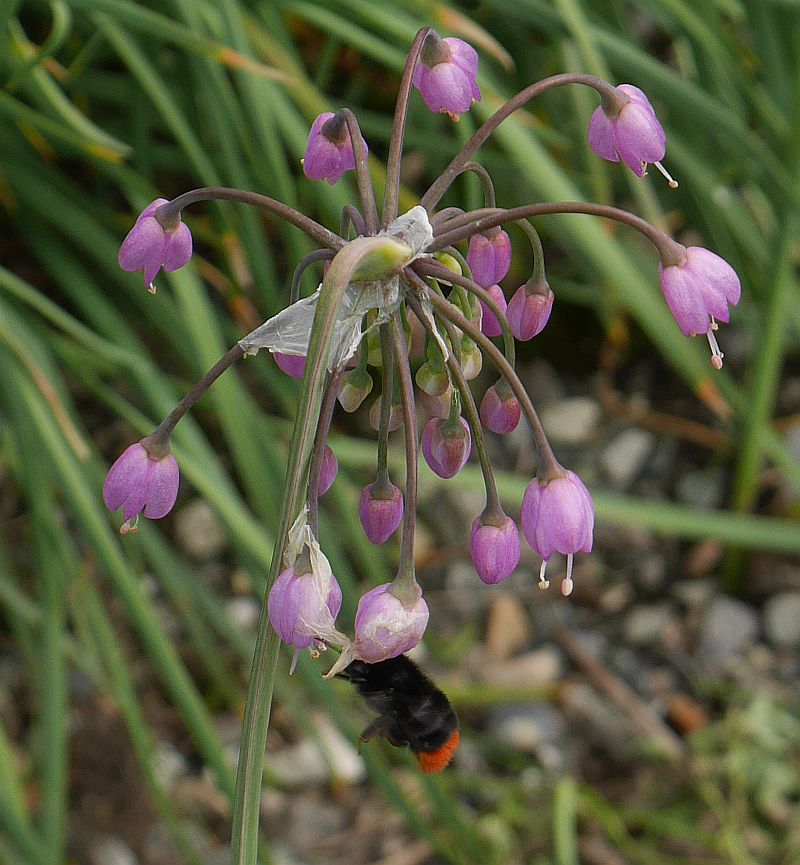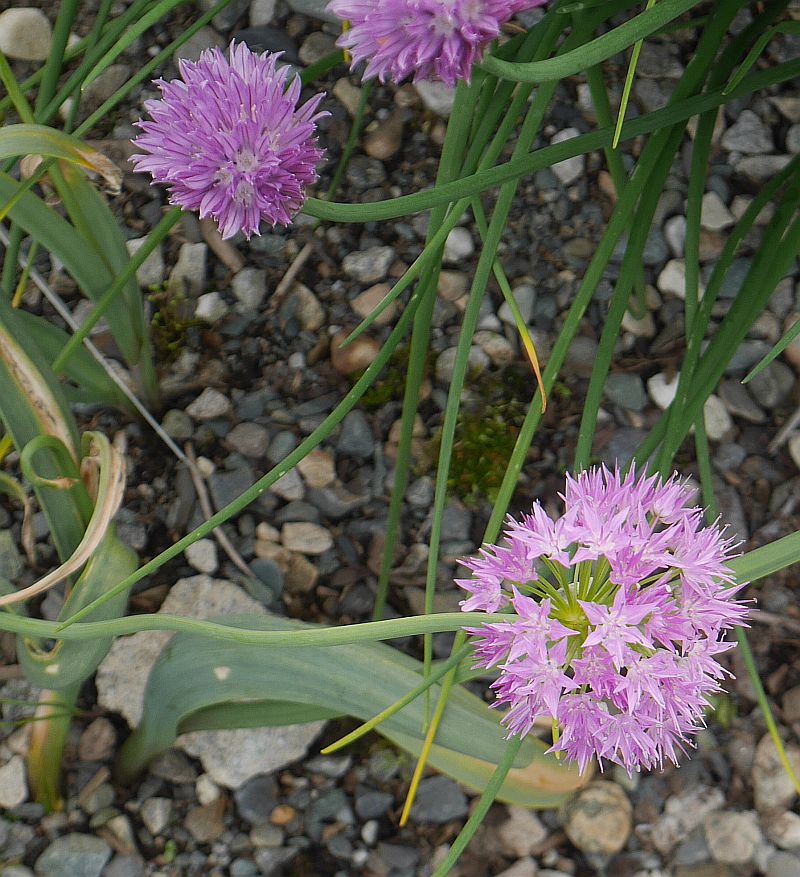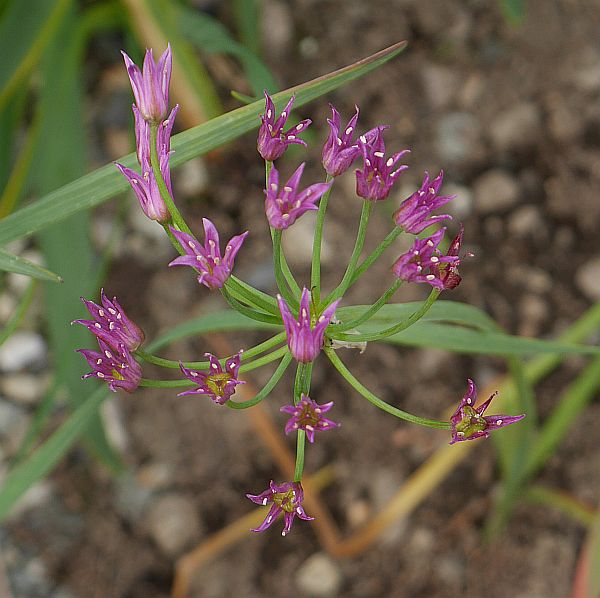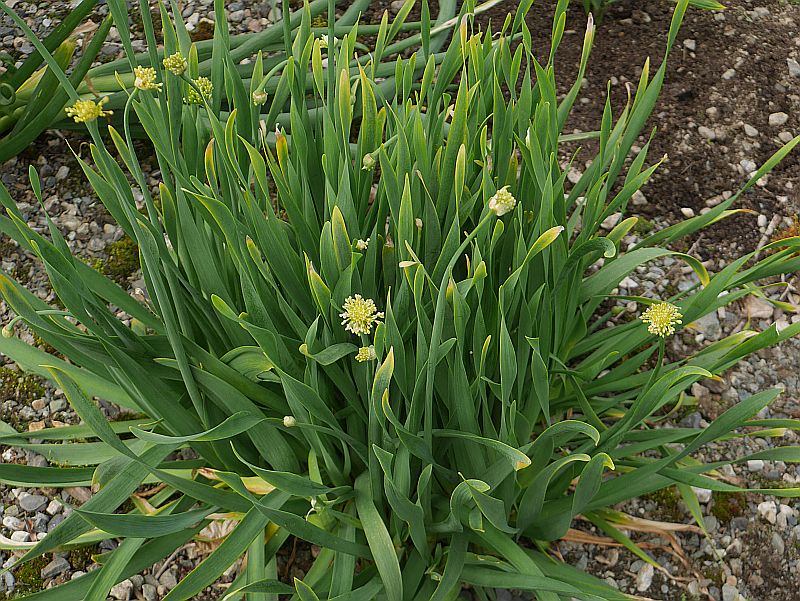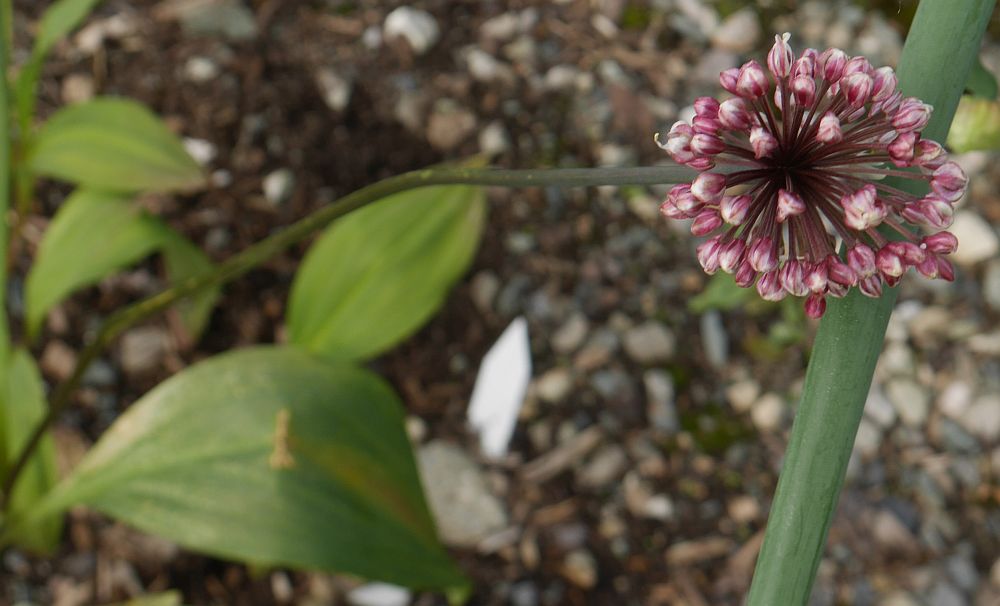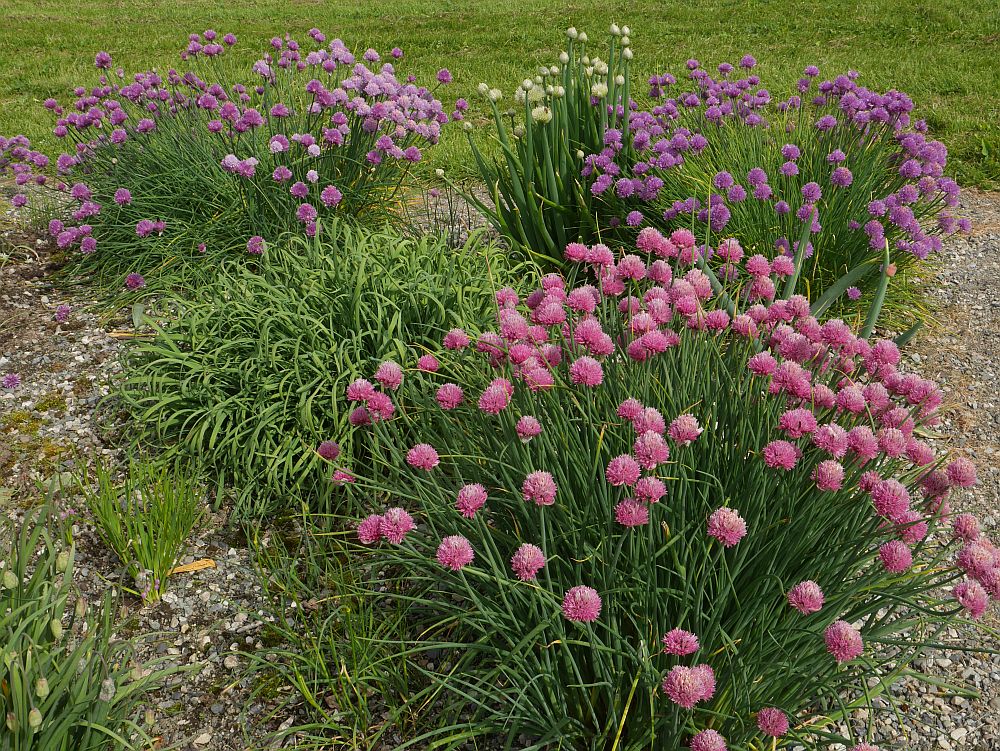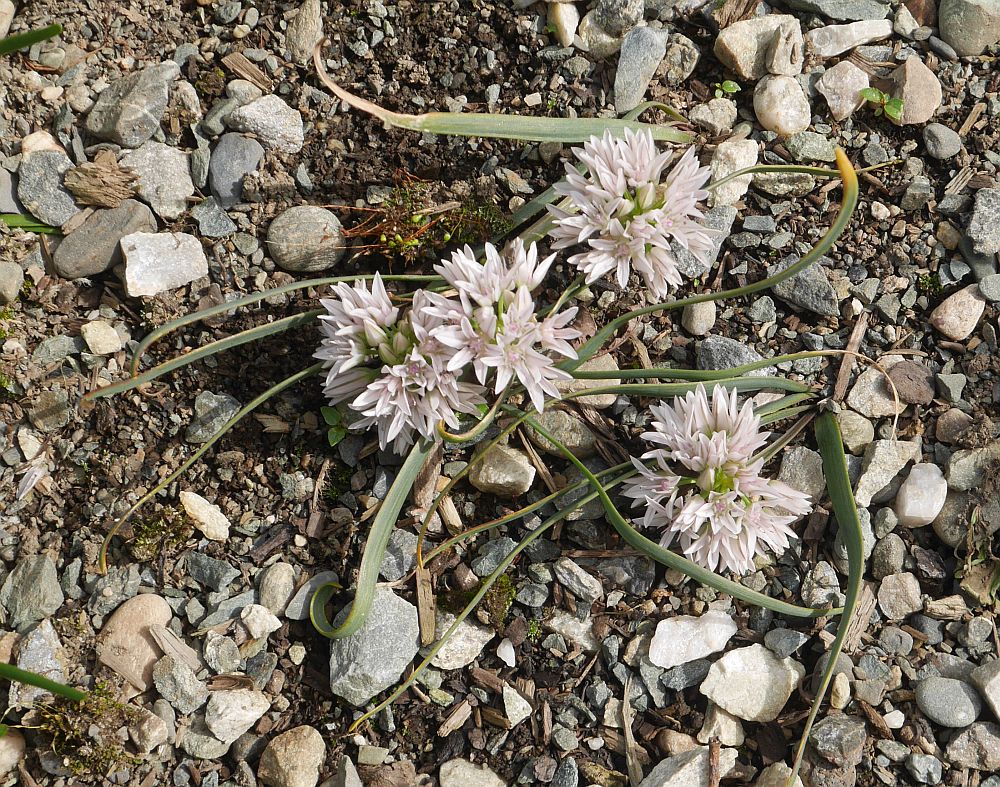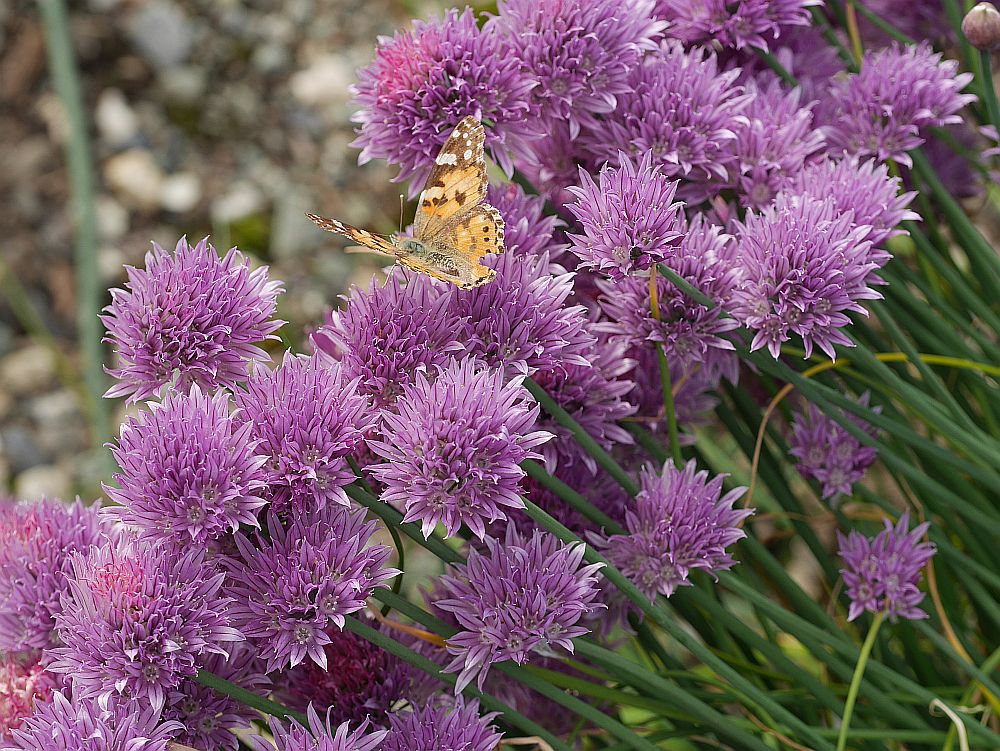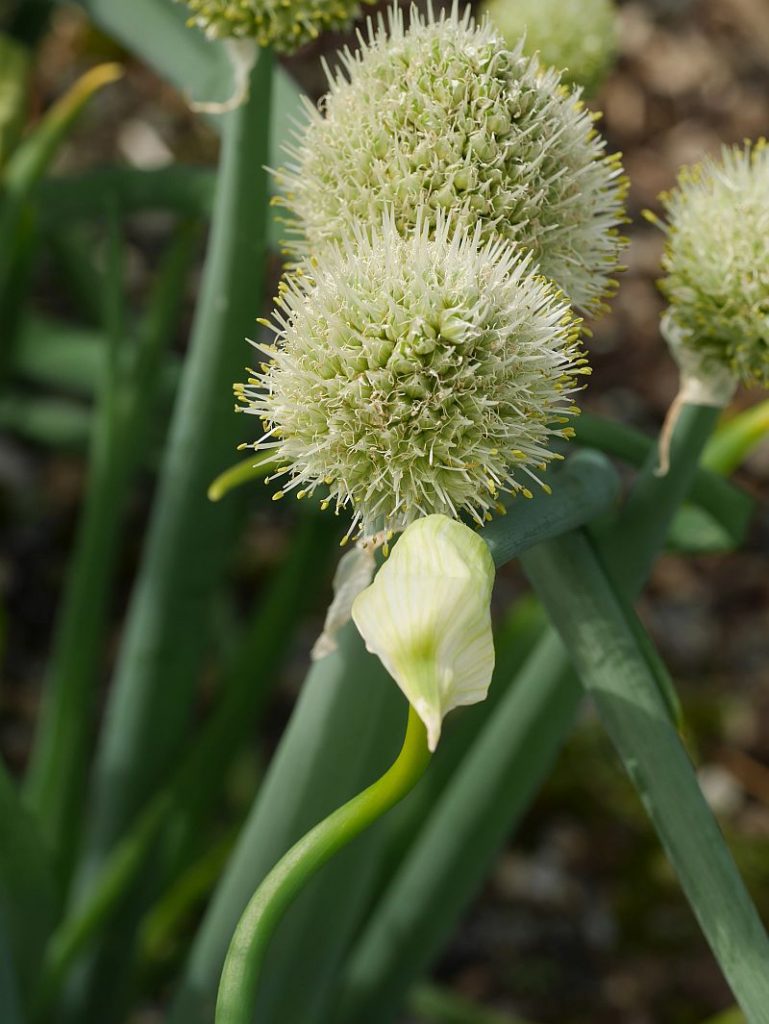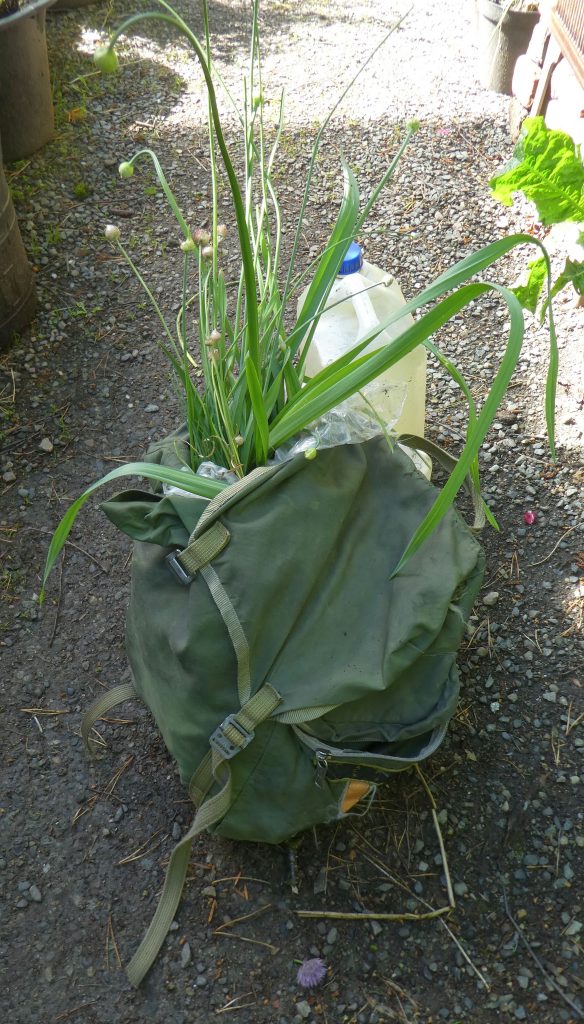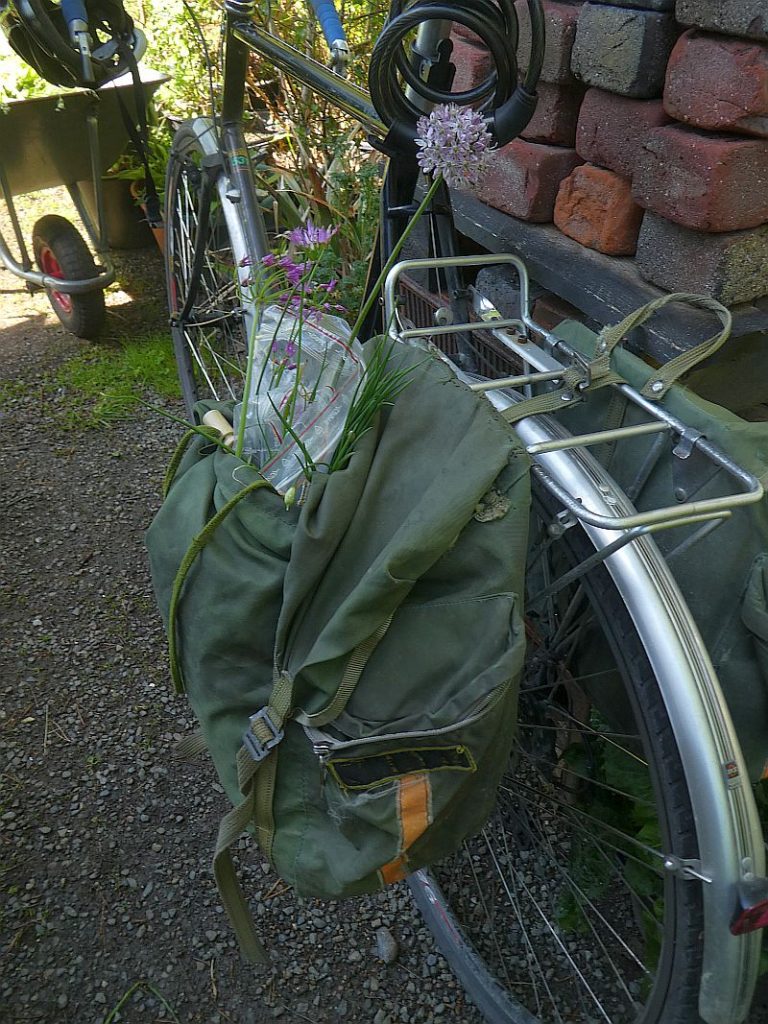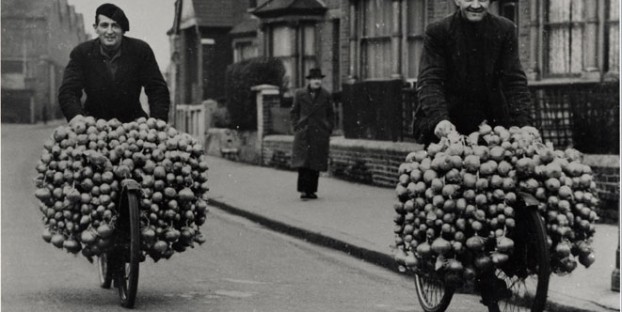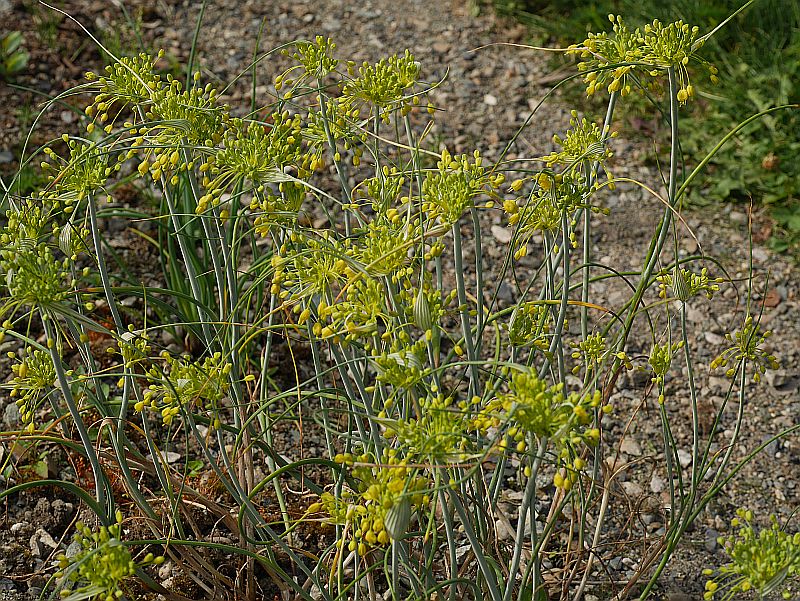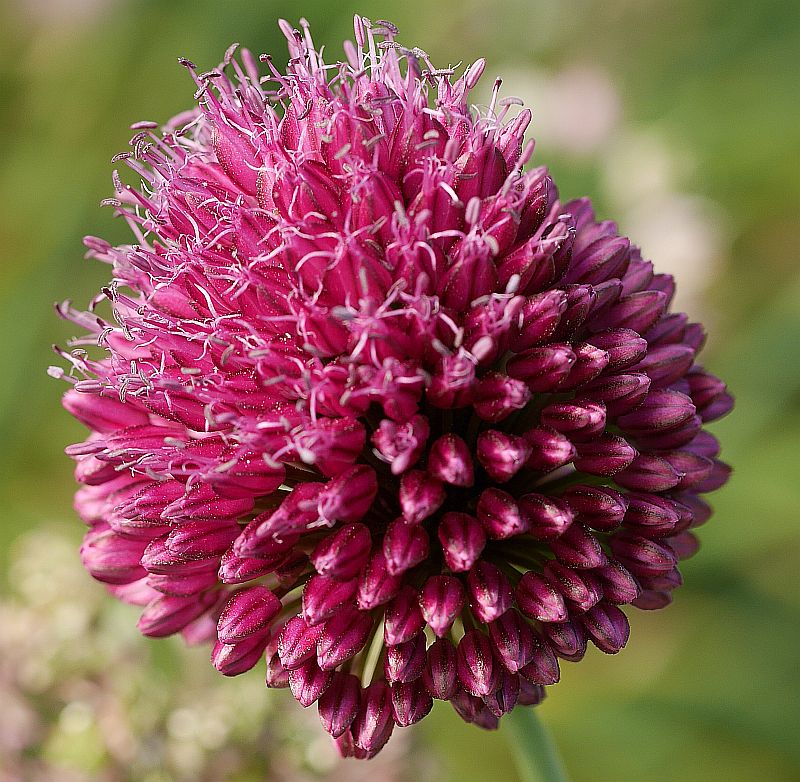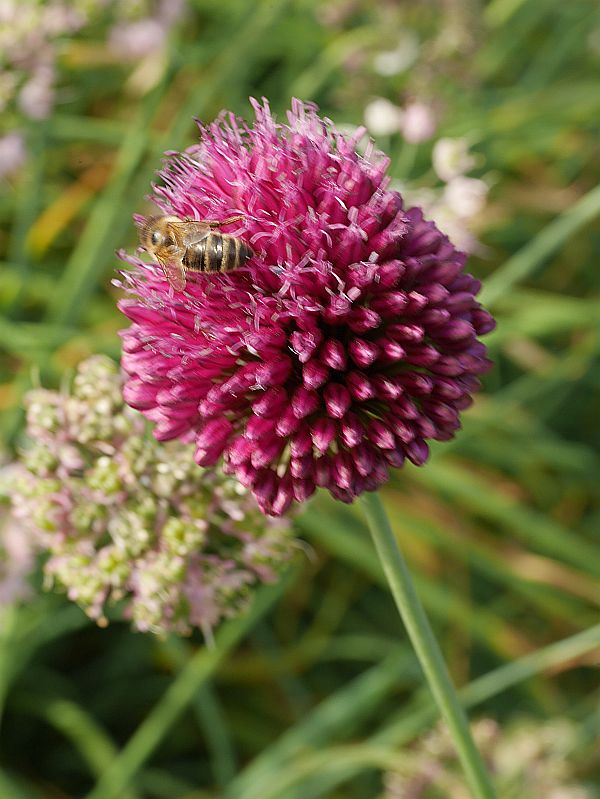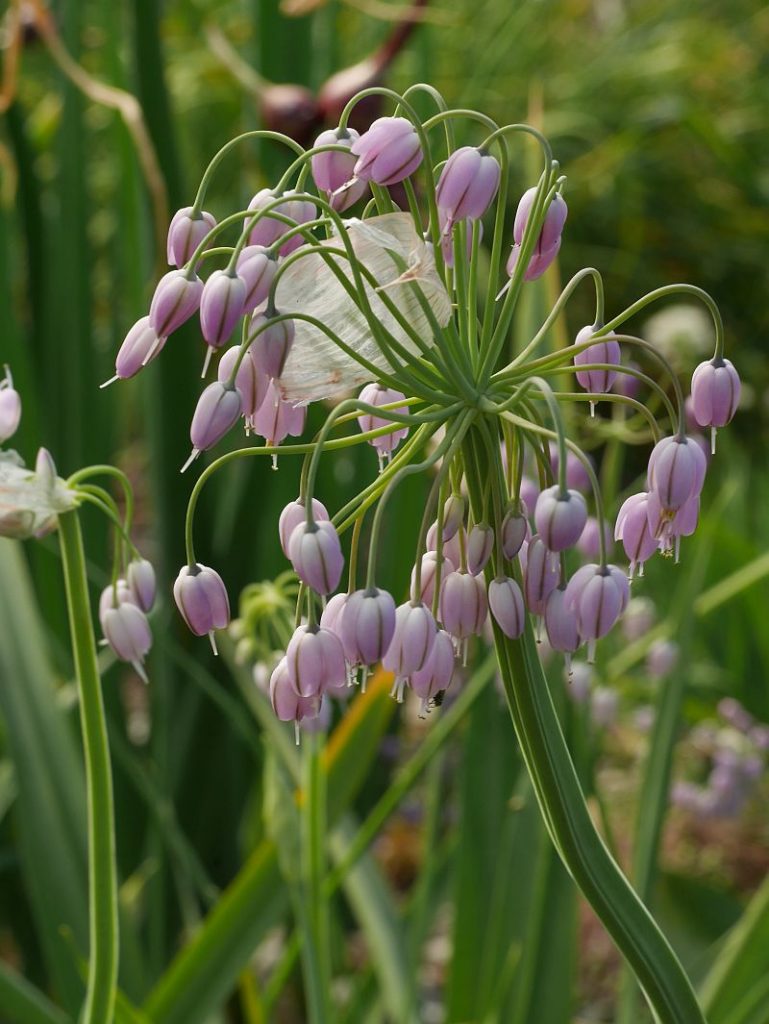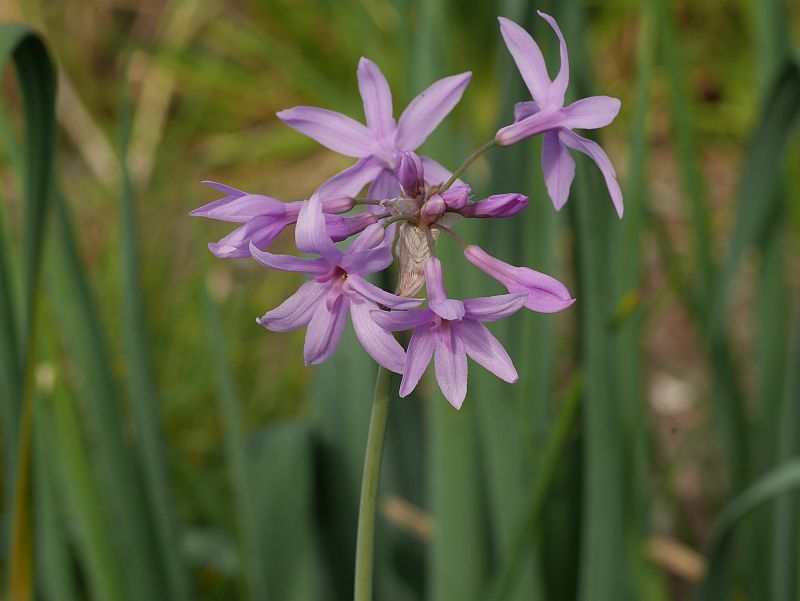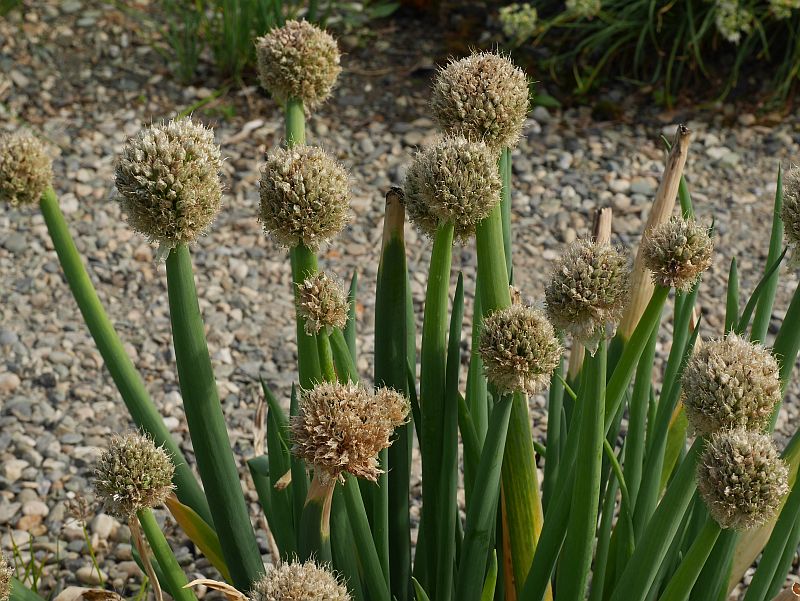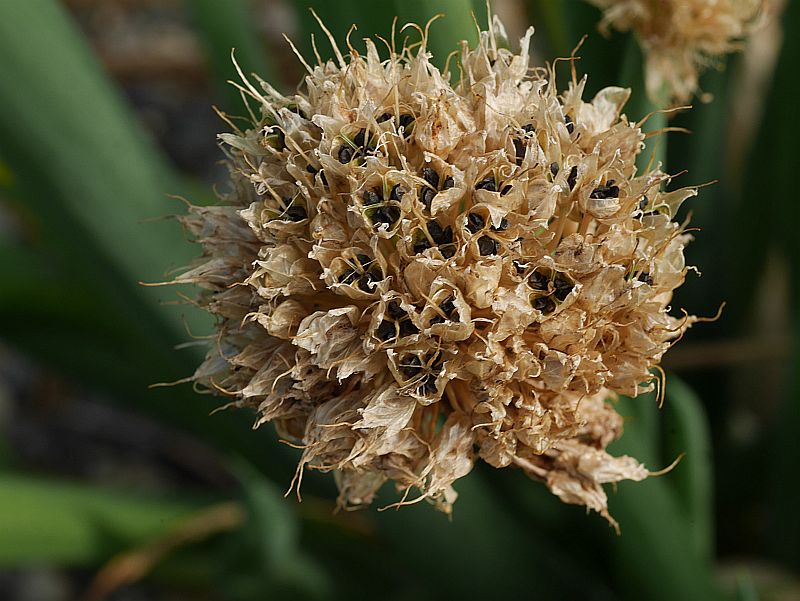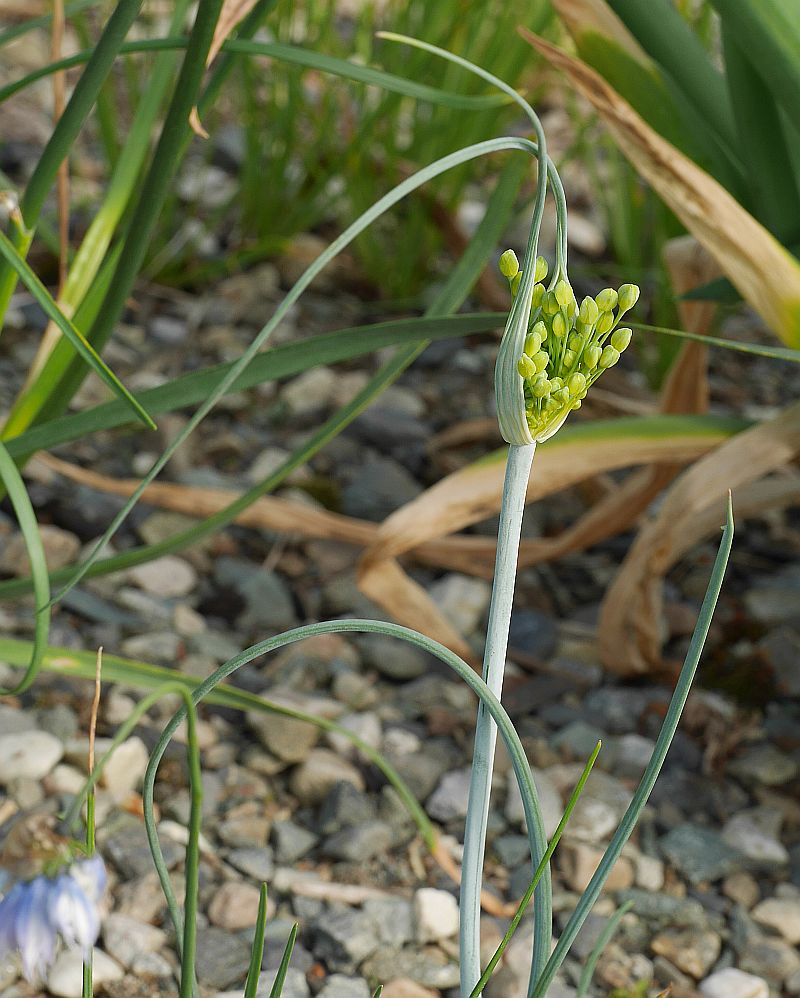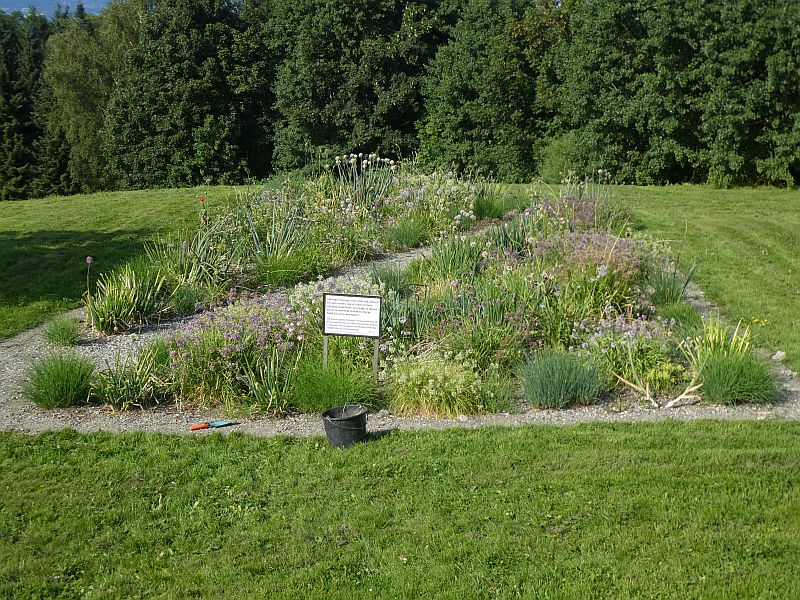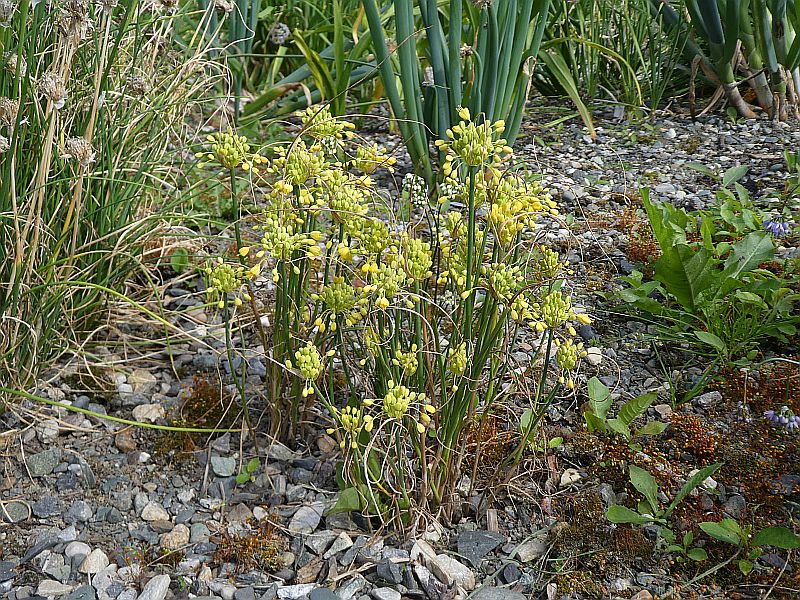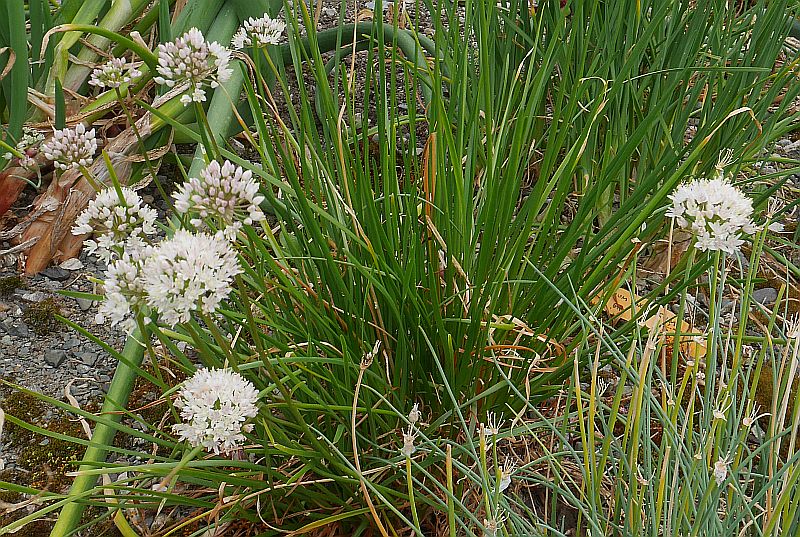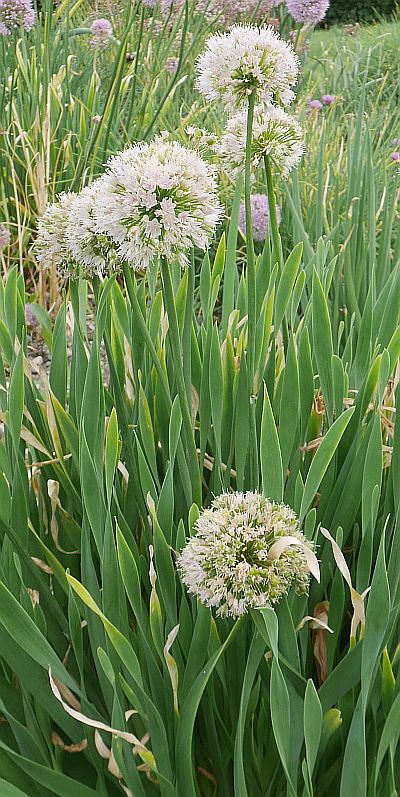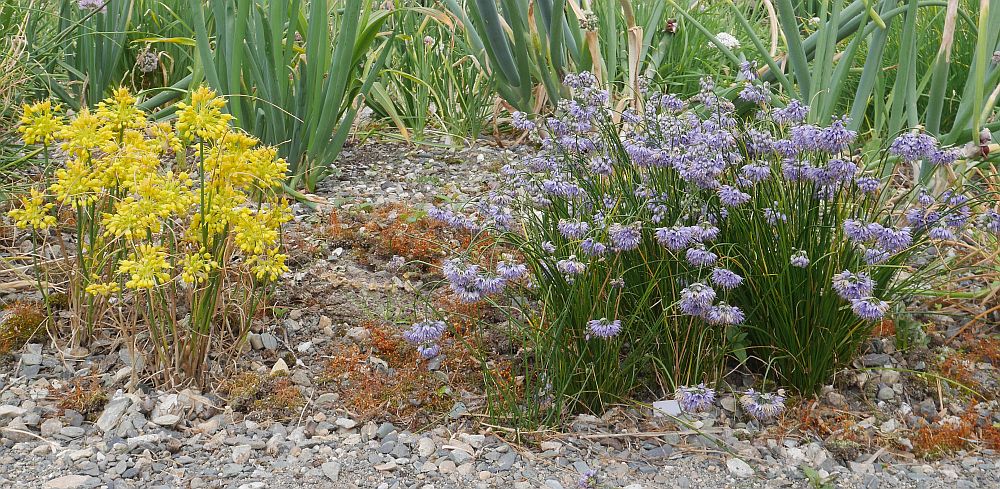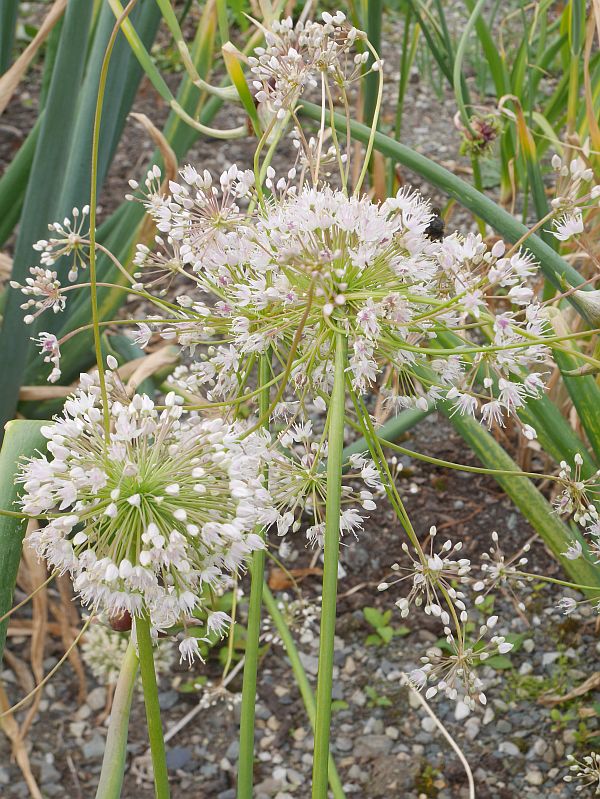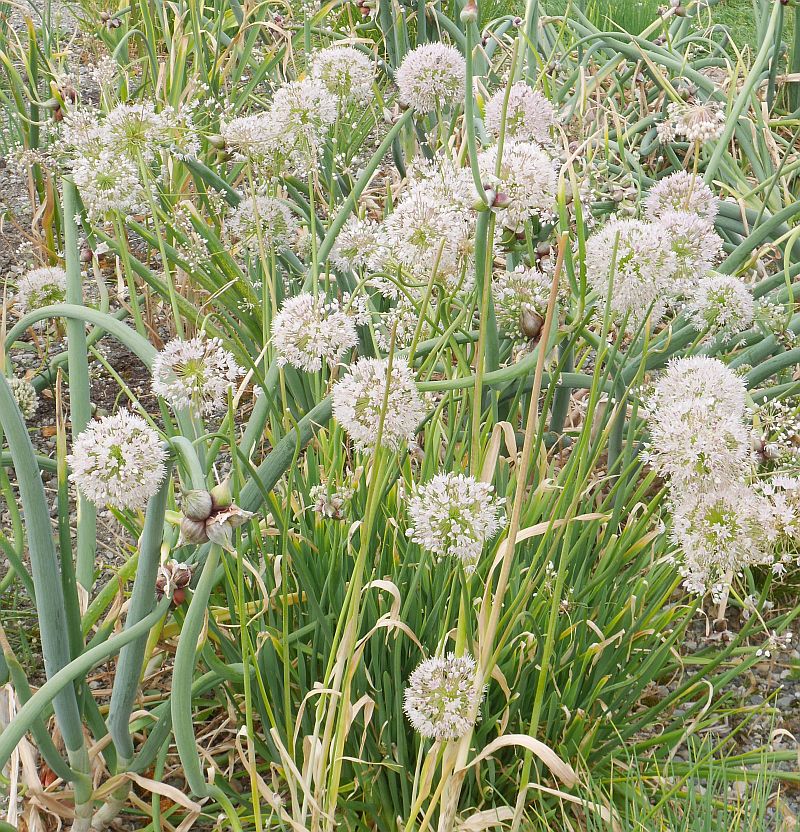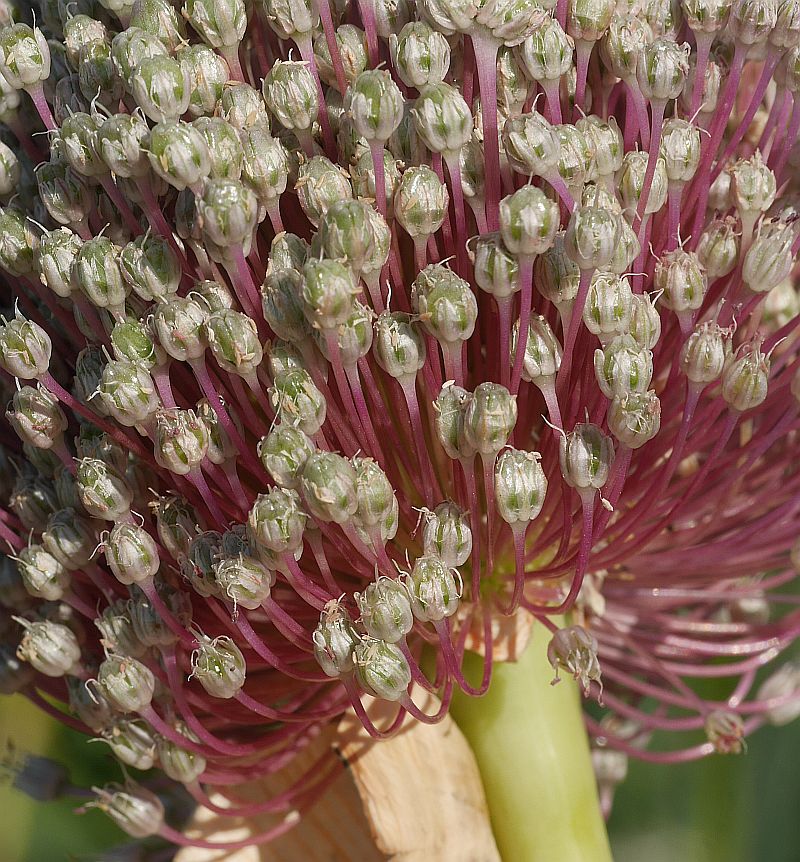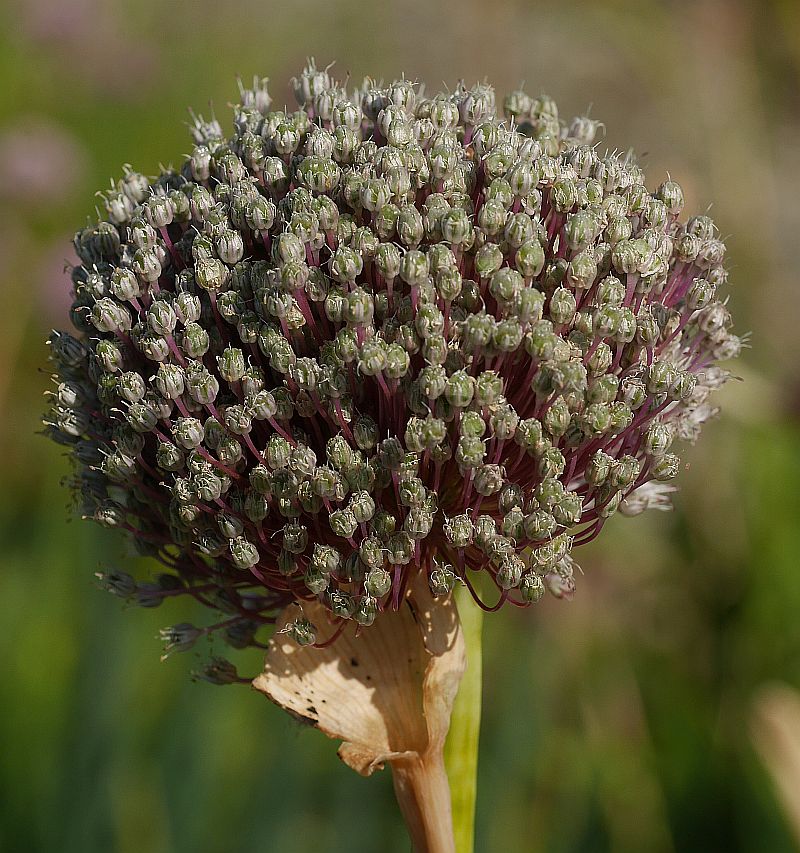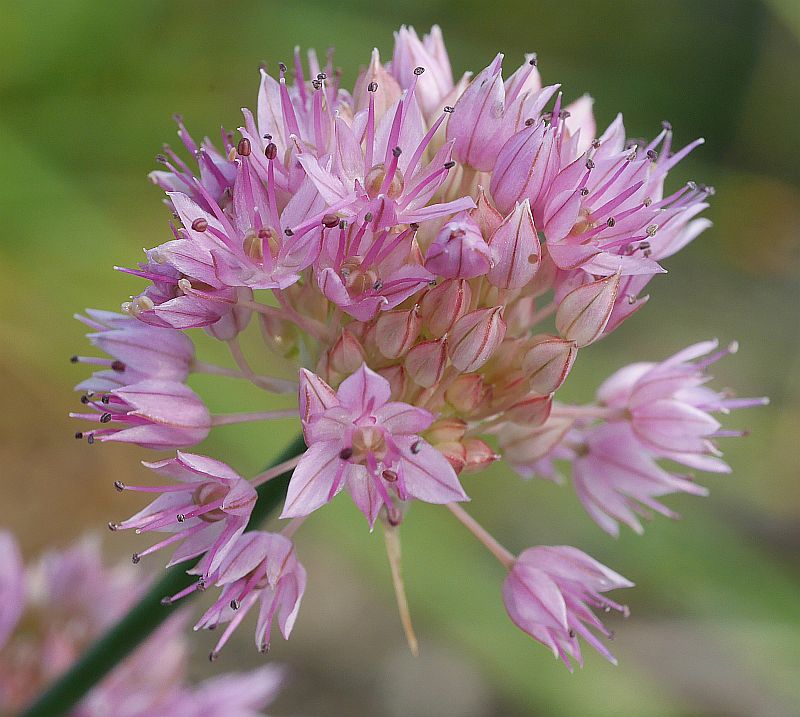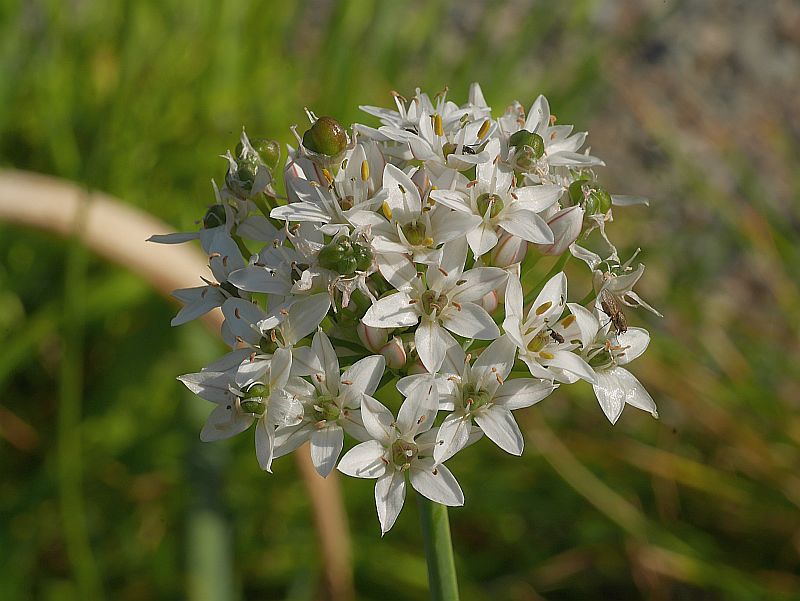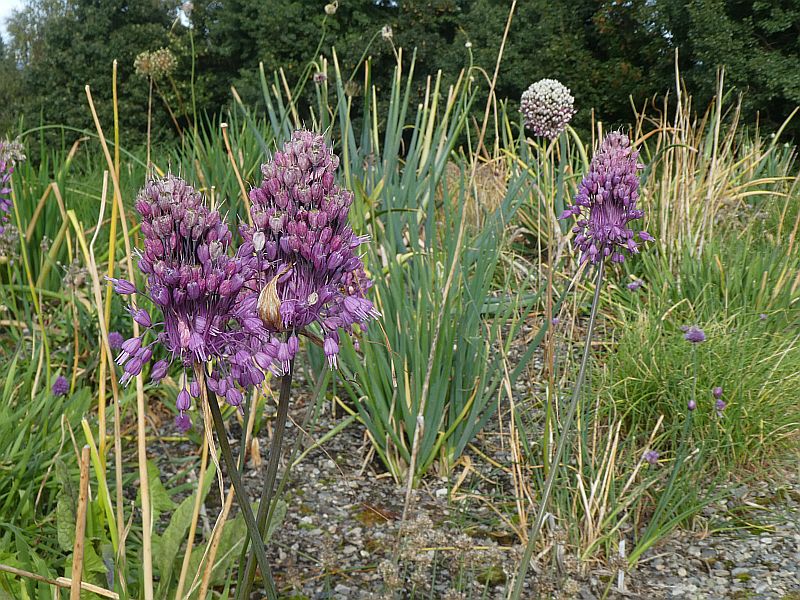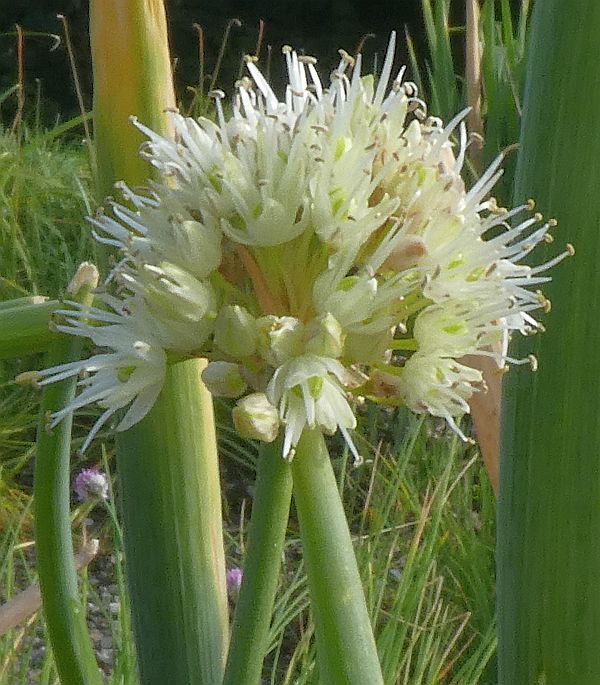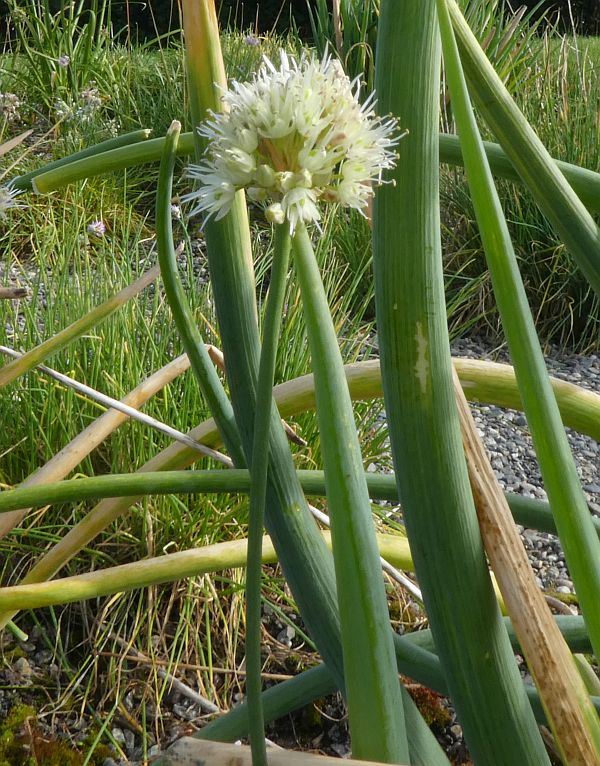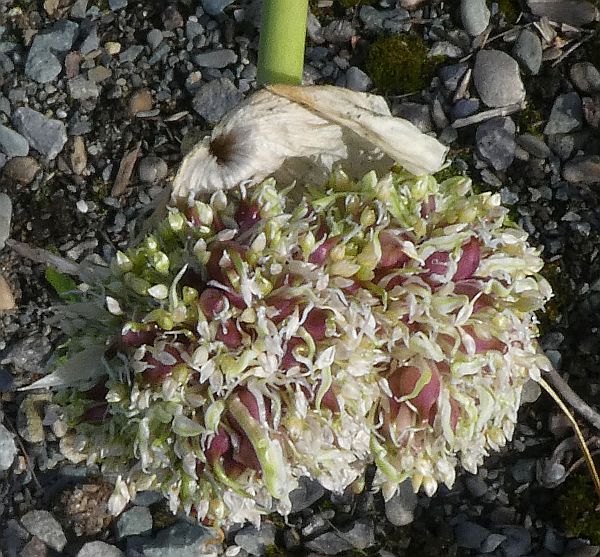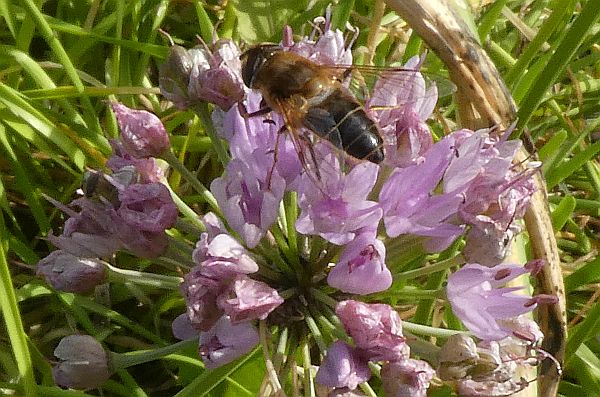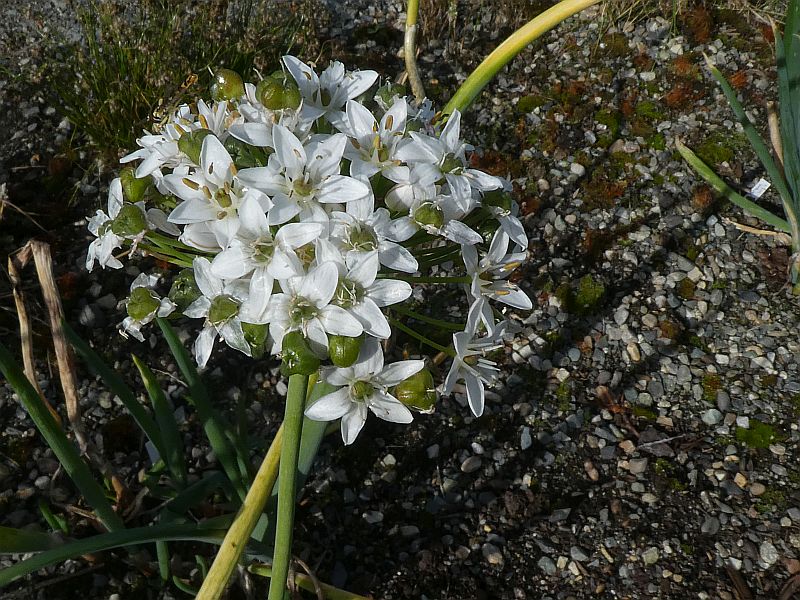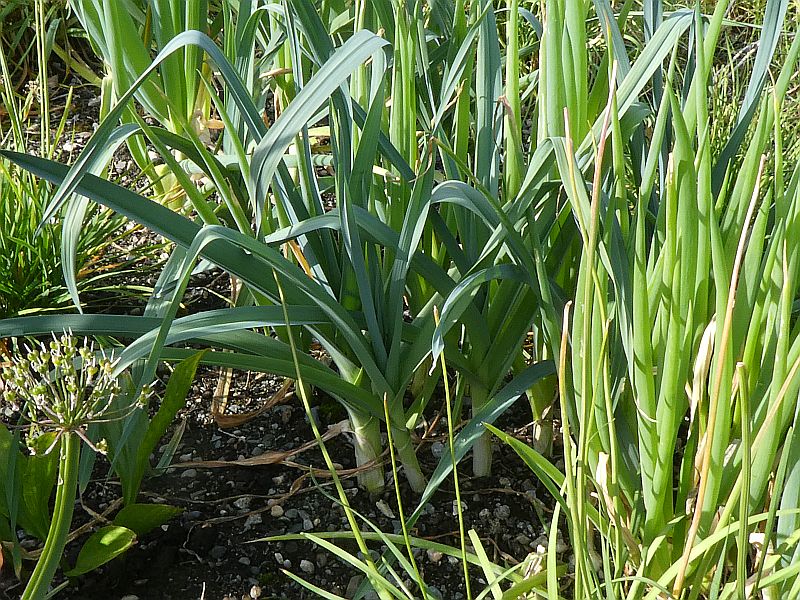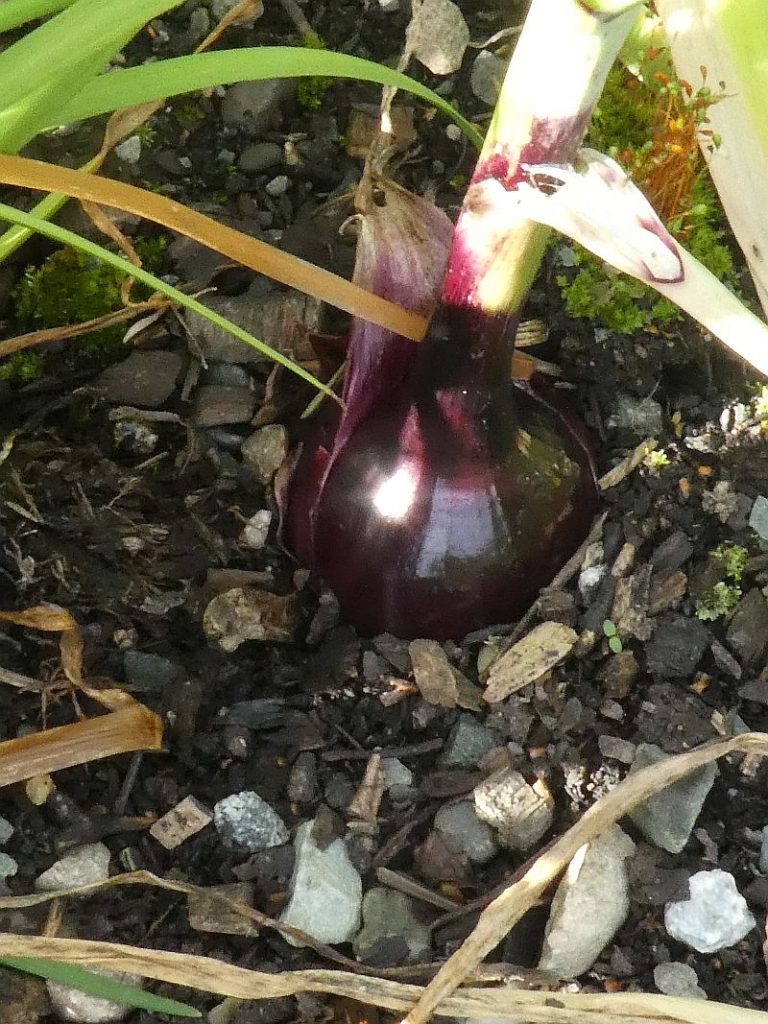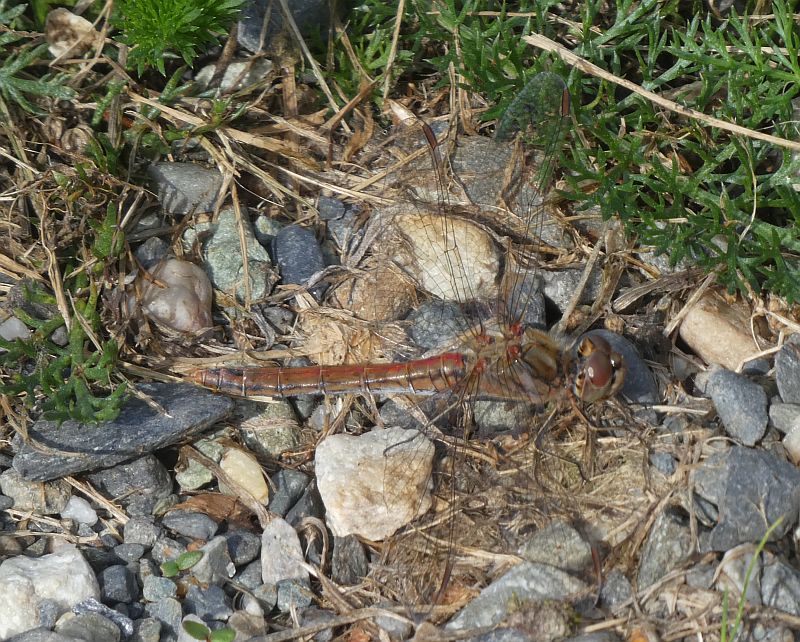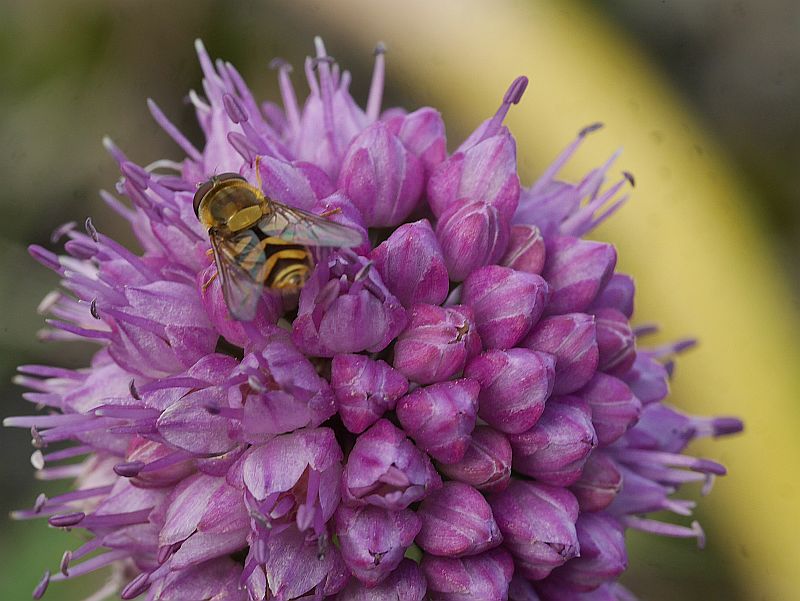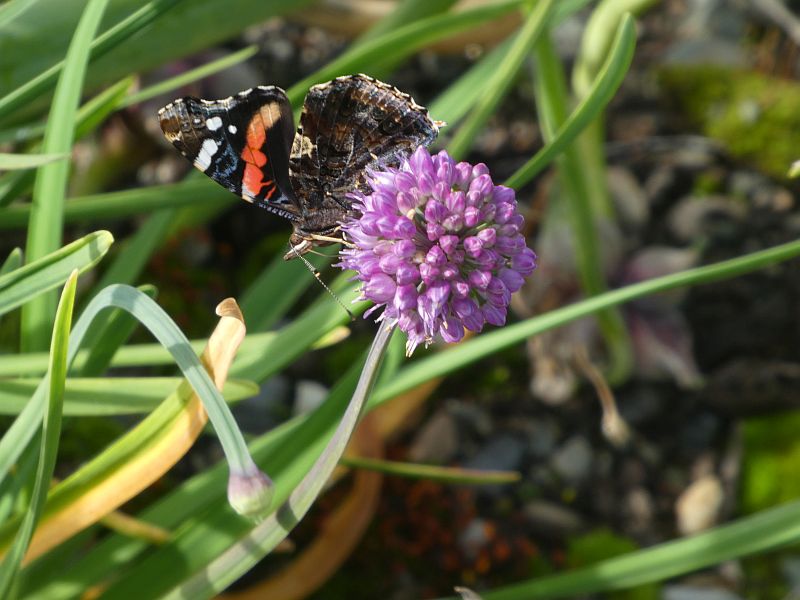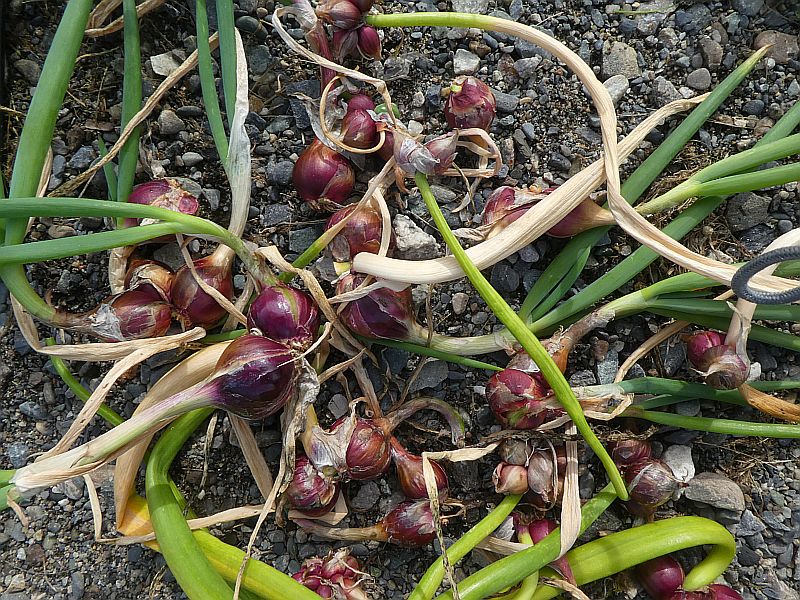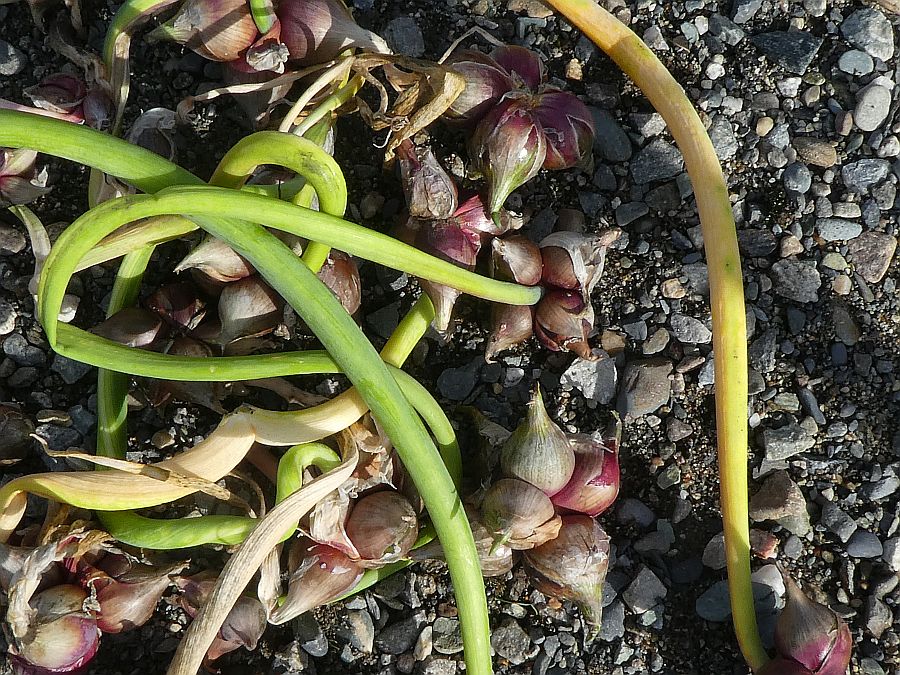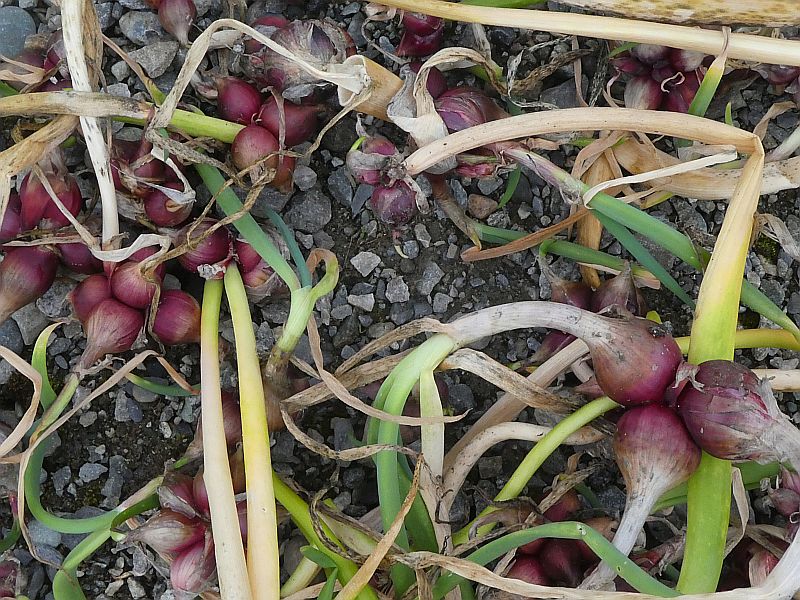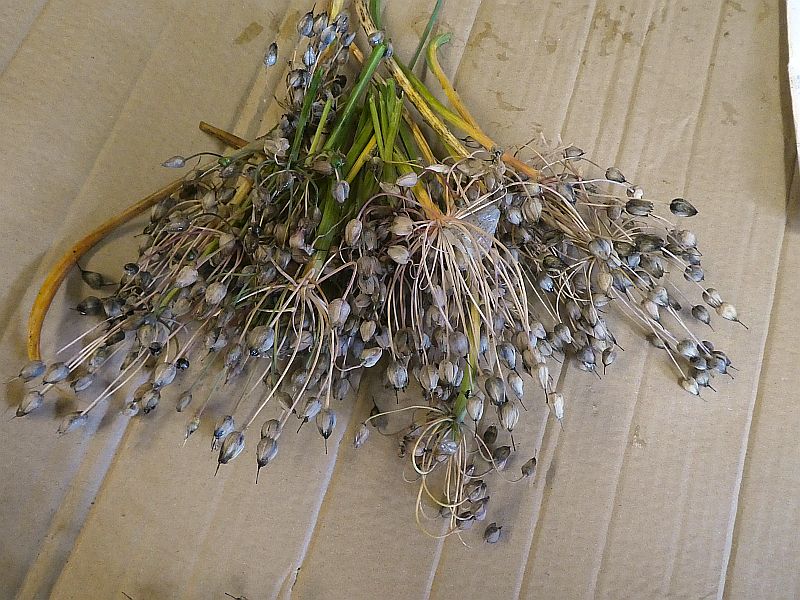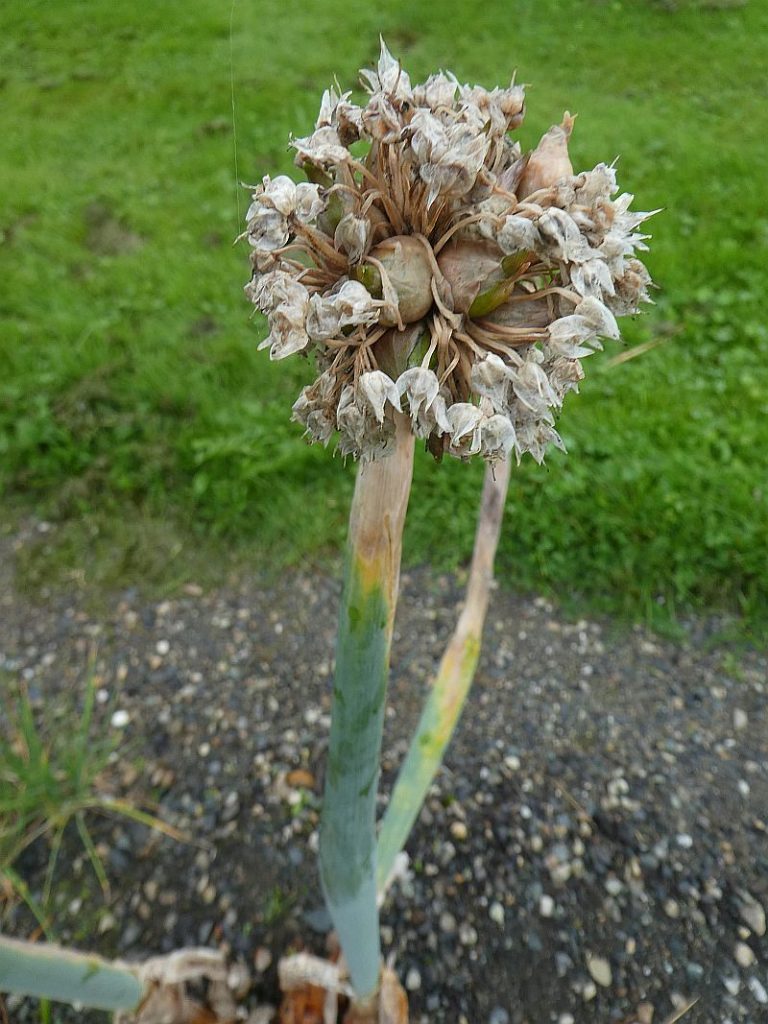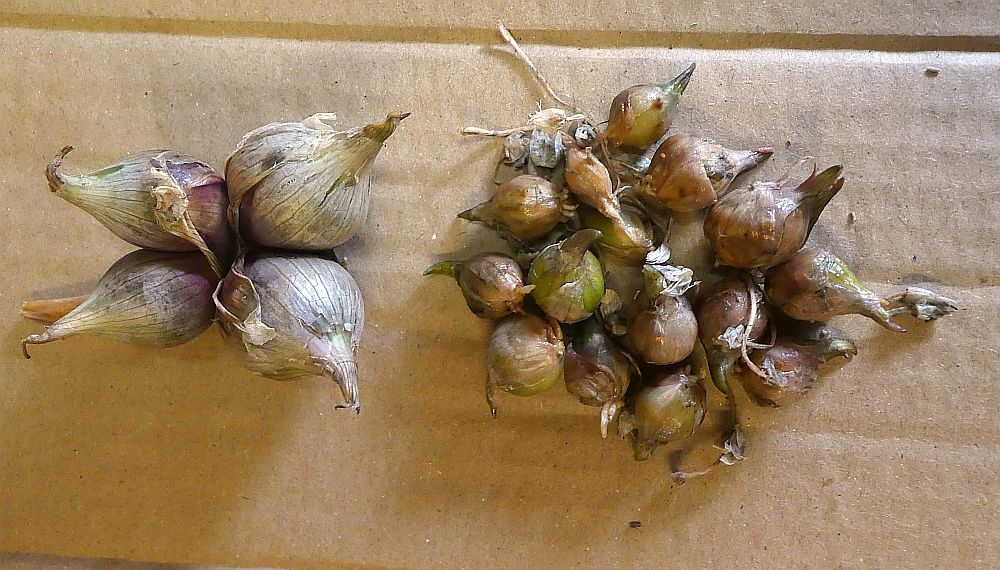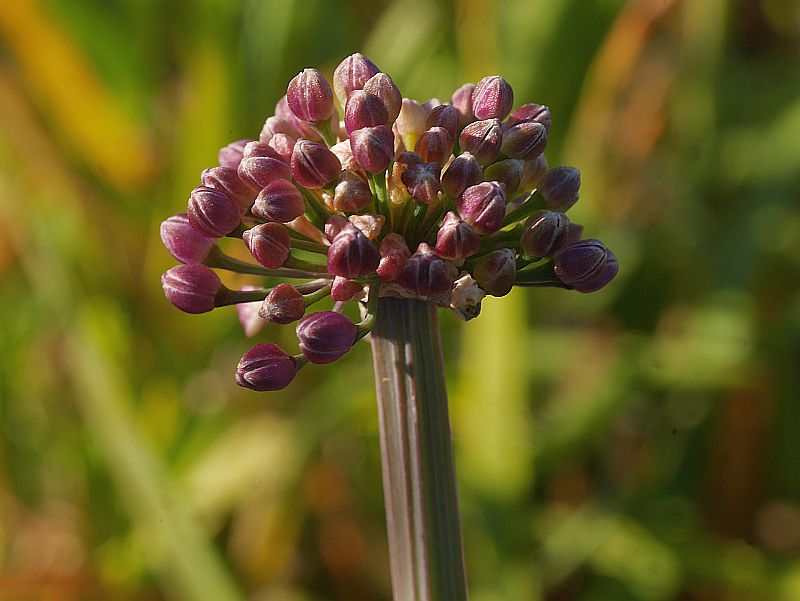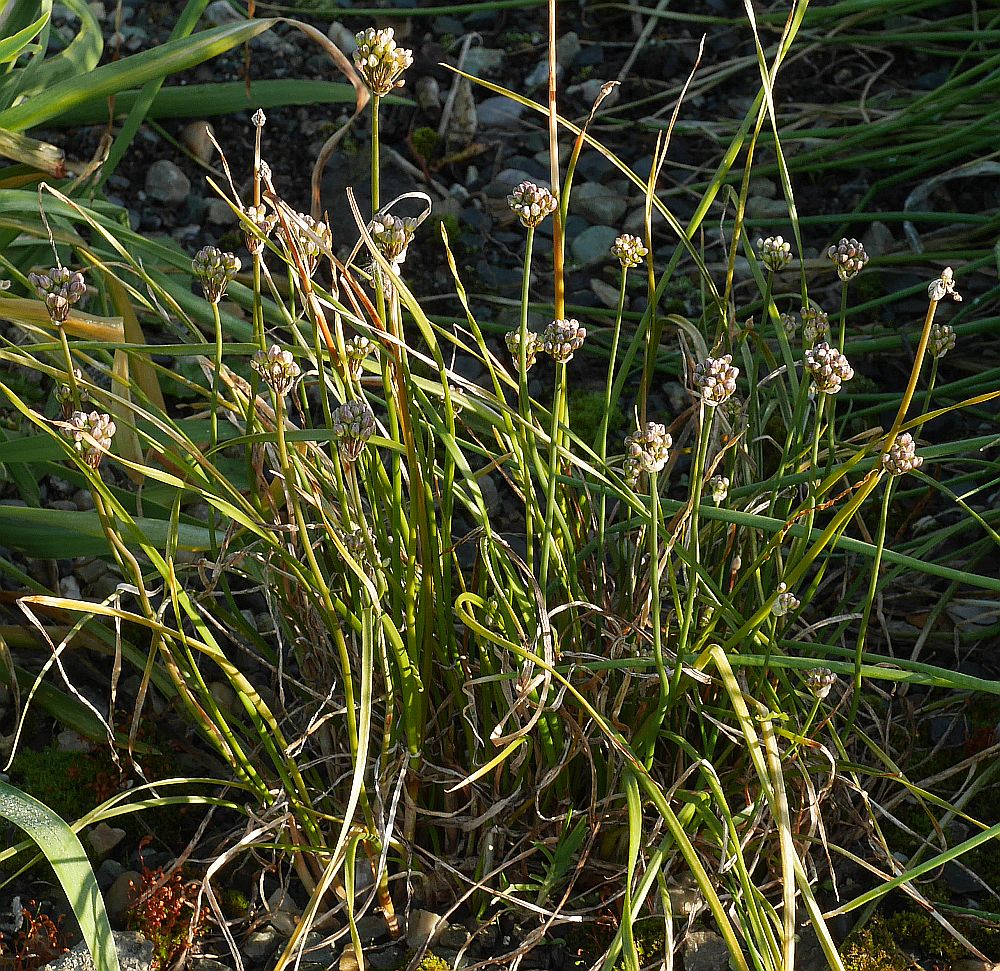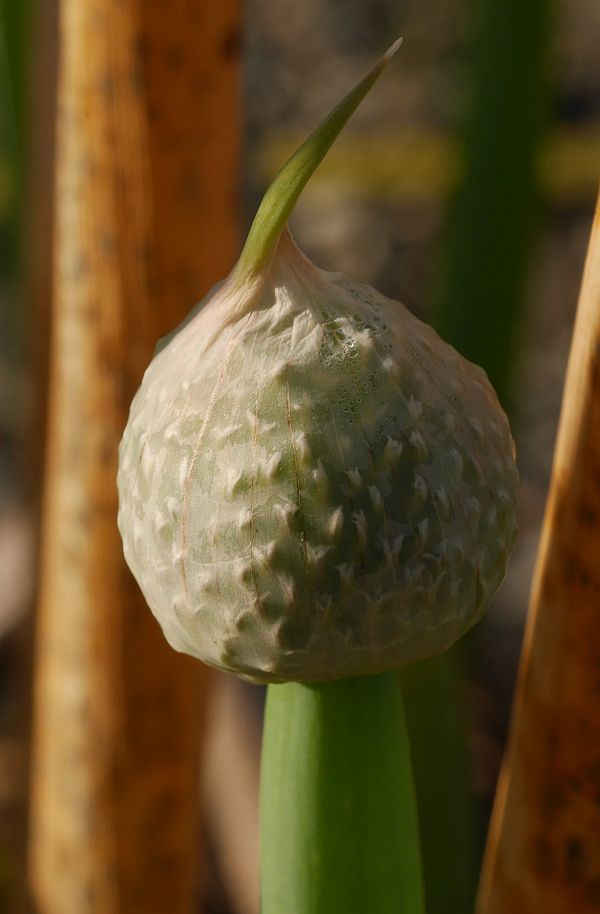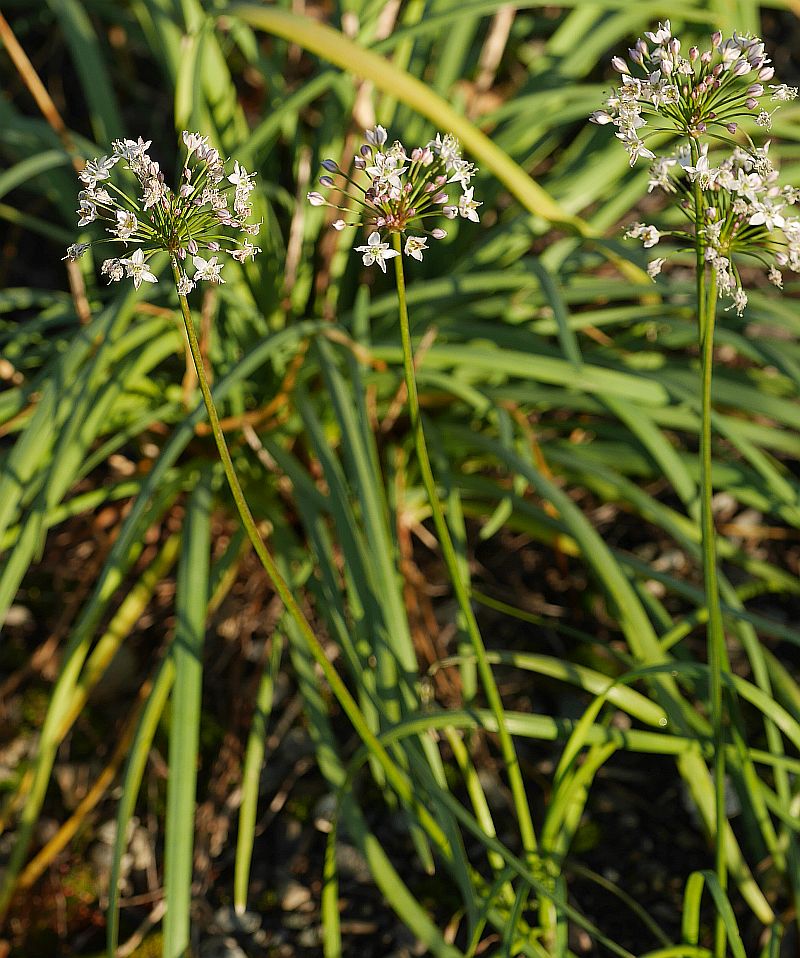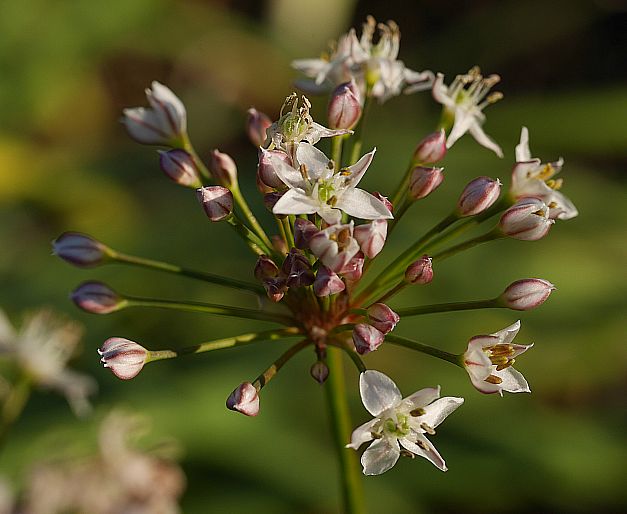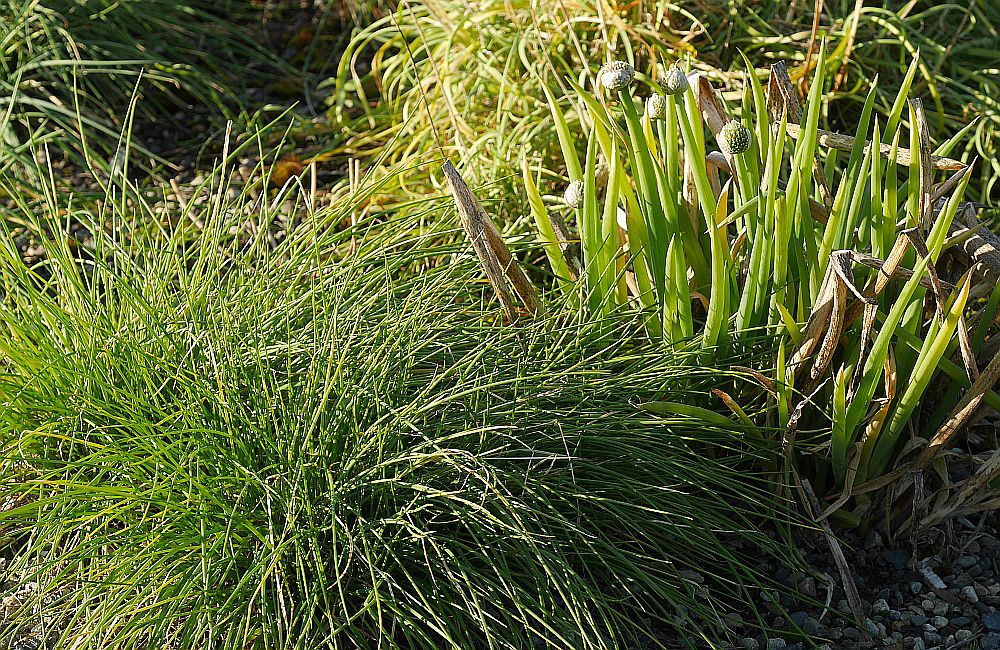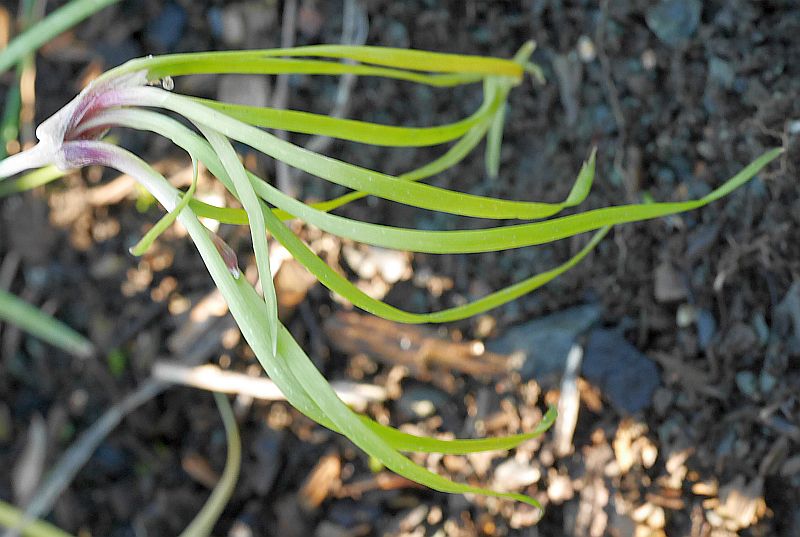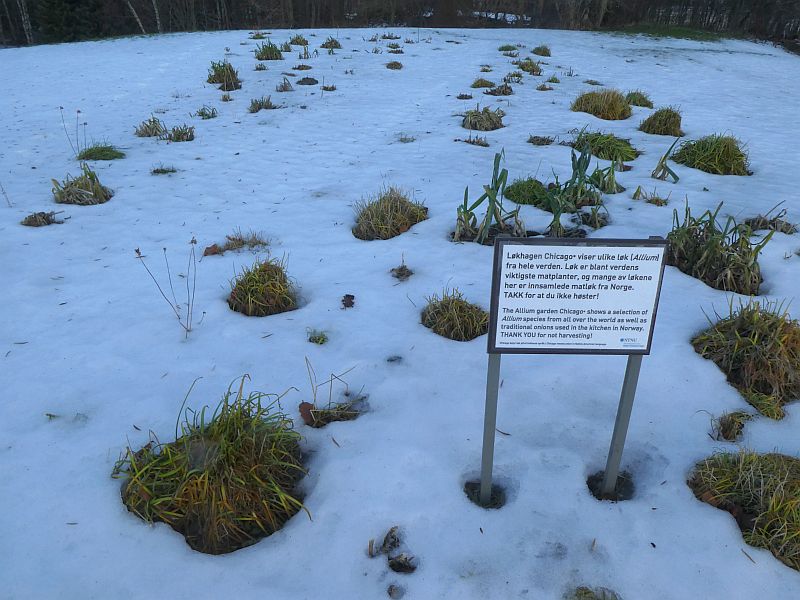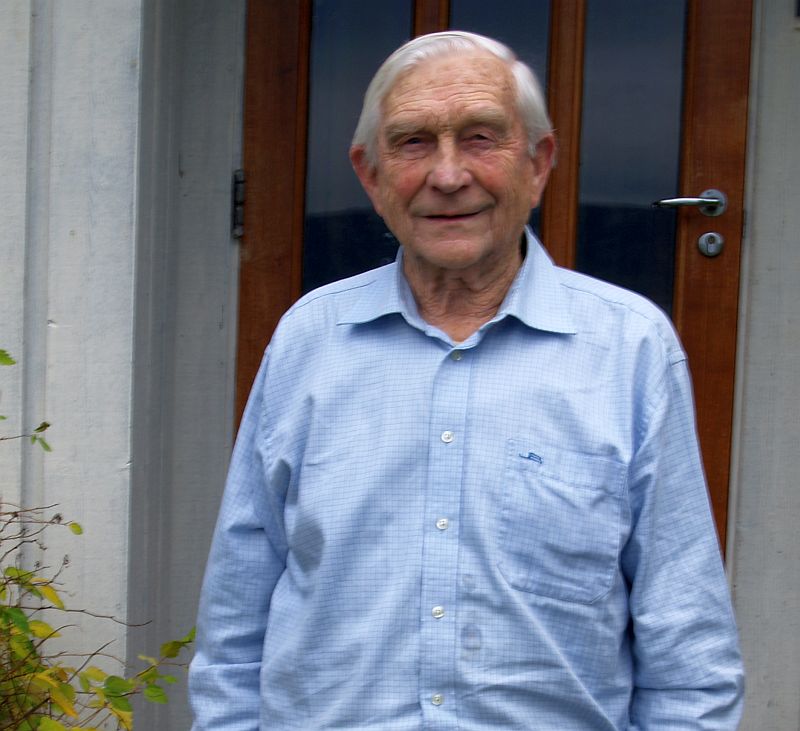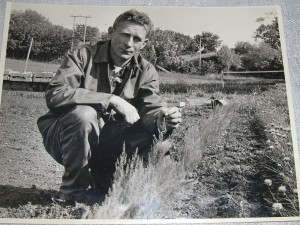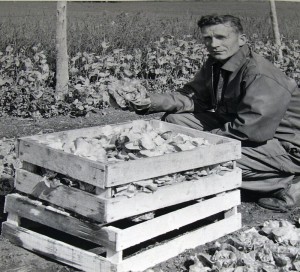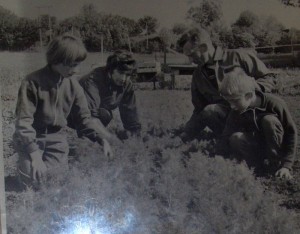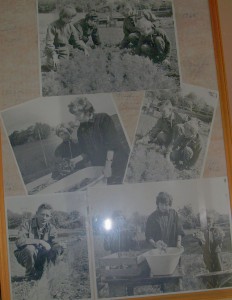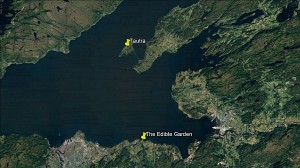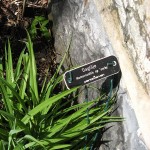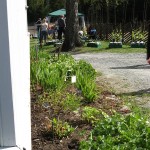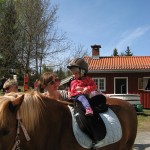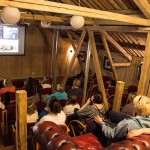English: This is the Norwegian version of the story I published in my book Around the World in 80 plants about a wild onion (Allium oleraceum) that was taken to Iceland and returned almost 1,000 years later).
Dette er historien om en viltvoksende løk, som kanskje er utgangspunkt for det engelske ordet garlic, som ble tatt til Island for snart 1000 år siden av en engelsk biskop og kom tilbake til Trøndelag til en annen engelskmann som jobbet med løk! Idag er denne løken å finne i den nye løkhagen på NTNU Ringve Botaniske Hagen i Trondheim ved siden av kanskje samme løk som ikke vandret til Island. Denne historien fortalte jeg om i min bok Around the World in 80 plants (se https://www.edimentals.com/blog/?page_id=30). En norsk artikkel er dessverre ikke lenge tilgjengelig på nettet. Artikkelen som kan leses nedenfor er tatt fra en større intern rapport fra en flerårig prosjekt “Innsamling og kartlegging av gamle matløk” som undertegnede gjennomførte, finansiert av Genressurssenteret.
Tag Archives: Genressurssenteret
The Allium garden at Ringve
The Allium garden at the Ringve Botanical Garden (Chicago) in Trondheim contains a collection of old Norwegian onions used for food from all over Norway including Allium fistulosum (Welsh onion), A. x proliferum (Egyptian and Catawissa onions), A. oleraceum, A. vineale, A. ursinum, A. scorodoprasum and A.victorialis (the last four are wild or naturalised species that have been moved into gardens in the past for food and, in the case of ursinum and victorialis are currently being domesticated in a big way!
In addition, a collection of wild species and ornamental cultivars have been planted to demonstrate the diversity of the Allium family!
I’ll be adding pictures to the album below on a regular basis.
See more pictures on my FB album here: https://tinyurl.com/y489yldy
Norsk:
Allium hagen ved Ringve Botaniske Hagen (NTNU) i Trondheim inneholder en samling av gamle norske matløk samlet fra hele Norge i perioden 2008-2019. Dette inkluderte Allium fistulosum (pipeløk), A. x proliferum (luftløk), A. oleraceum, A. vineale, A. ursinum, A. scorodoprasum og A.victorialis (de fem siste er vill- eller naturaliserte arter som har blitt flyttet til hager som matplante før i tiden, og dette er fortsatt gjort når det gjelder ursinum (ramsløk) og victorialis (seiersløk) i økende grad!
I tillegg kan man her se en samling av ville arter og pryvarianter plantet for å demonstrere mangfoldet av Allium-slekten!
Hagen er støttet finansielt av Landbruksdirektoratet, og Genressurssenteret.
3 videos of Painted Ladies (Tistelsommerfugl) on Allium schoenoprasum on 11th June 2017
300719:
160819: Allium cernuum x stellatum?
160819: Allium wallichi
Jan Lein, northernmost Asparagus pioneer
As part of my project for the Norwegian Genetic Resource Centre documenting and collecting old Norwegian vegetables, I received a tip about a retired farmer, Jan Lein, who had supposedly grown asparagus commercially on Tautra (https://en.wikipedia.org/wiki/Tautra), a historic island which I can just see from my house on the other side of the Trondheimsfjorden. The fact that the island is surrounded by relatively warm water in winter makes for a mild climate and early spring. The island and surrounding area is known as Trondheim’s vegetable garden!
I called Lein and agreed to meet him at his house on 17th October 2010. I met a really nice man who was proud of his pioneering work with asparagus on Tautra which he believed started in the early 1960s. He told me that he even grew organically with seaweed as fertiliser and he grew white asparagus by mounding the plants with earth. In his house, there were a number of pictures on the walls of his vegetables, including asparagus! The plants themselves derived from seed bought from Leuthens Seed Catalogue in Trondheim. He sold on the market in Trondheim for a number of years until his local production was outcompeted by imported asparagus ☹ Her grew about 12-13 different vegetables at that time!
Jan showed me this plant nearby which was one of the original plants
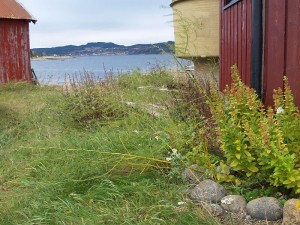
RIP Jan Lein, the northernmost Asparagus grower in the world?
The pictures below were photographed on his wall:
Portåsen and Norwegian Plant Heritage
The Norwegian Genetic Resource Centre (NGRC) think that all cultural heritage institutions in Norway with landscaping ought to use historical plants suitable for the actual buildings, associated culture and history. Portåsen is one of the places that have made the most progress with this. Portåsen is the childhood home of Herman Wildenvey (1885-1959) in Nedre Eiker. Wildenvey is one of the most prominent Norwegian poets of the twentieth century. During his lifetime he published 44 books of his own poetry. Portåsen was established in 2010 as a cultural centre for the dissemination of Herman Wildenvey’s life and works. Herman Wildenvey was known as the “sun and summer” poet, and his poems reference some 80 different flower and plants. It is said that one of his first reading experiences were from Blytt’s Flora. Therefore it is quite natural that historical plants and traditional plant use gives a key backdrop to the varied cultural events with exhibitions, concerts, walks etc. at Portåsen. The place is beautifully restored. In the flower beds around the houses in the yard can be found historical perennial ornamentals (to be classified as Plant Heritage, a plant has to be documented to have been grown 50 years ago), which were either found in old gardens locally or received from “Oldemors garden” at the botanics in Oslo or from Lier Bygdetun (both have collections coordinated with the NGRC). Just above the yard is a well-tended vegetable and herb garden with food and spice plants, and within a traditionally erected fence can be found old apple varieties. A meadow has also been sown with seeds from Ryghsetra, an old local hayfield which Friends of the Earth Buskerud have received the Norwegian Plant Heritage prize for maintaining! The following lines are from Wildenveys poem “O, ennu å være”
O, ennu å synge om midtsommernetter,
Og ennu å ånde i kryddersval luft,
Ennu å vite, hva blomstene hetter
Og nevne dem ved deres farve og duft.
(loosely translated from Åsmund Asdal’s article here: http://www.skogoglandskap.no/nyheter/2012/portasen/newsitem)






